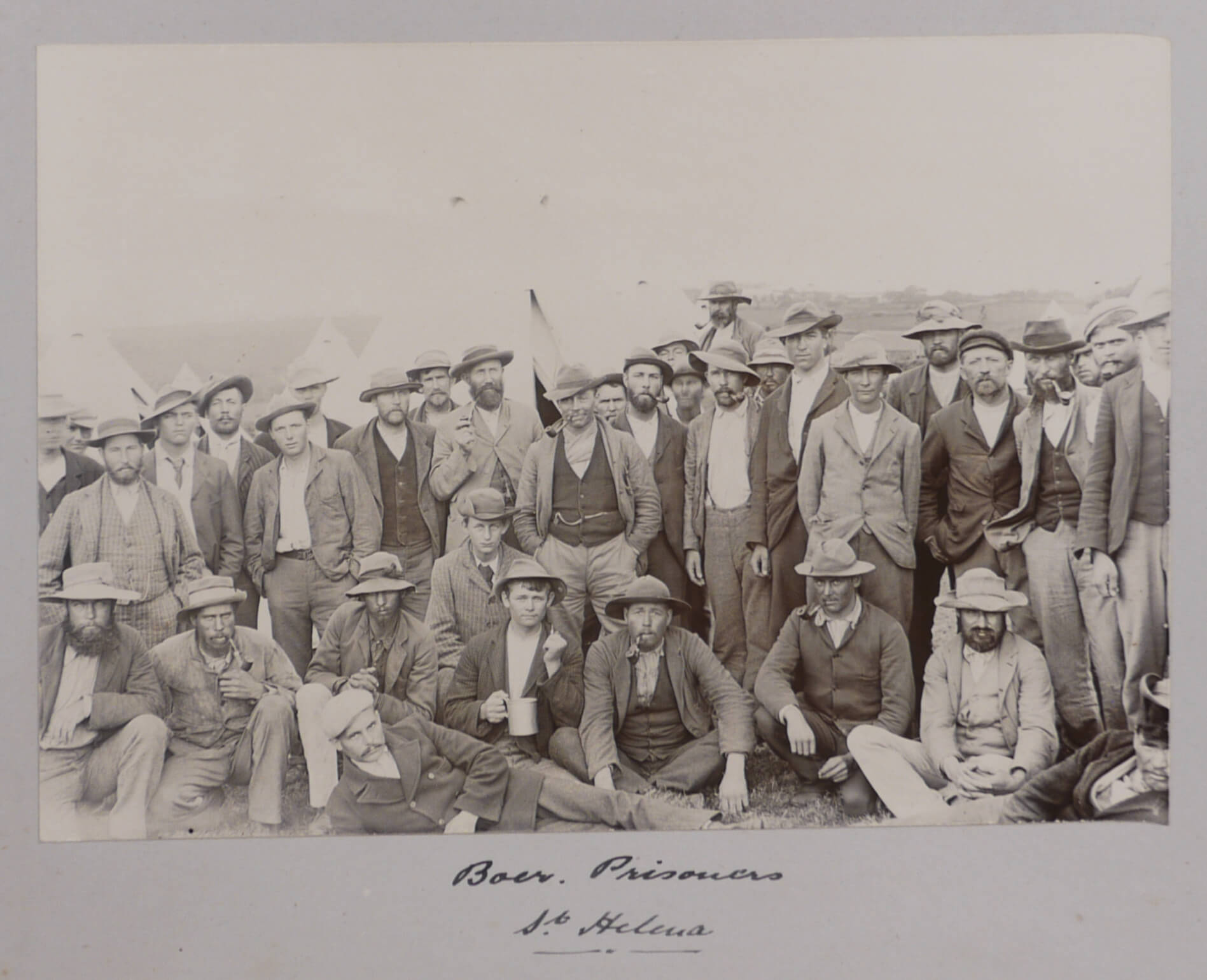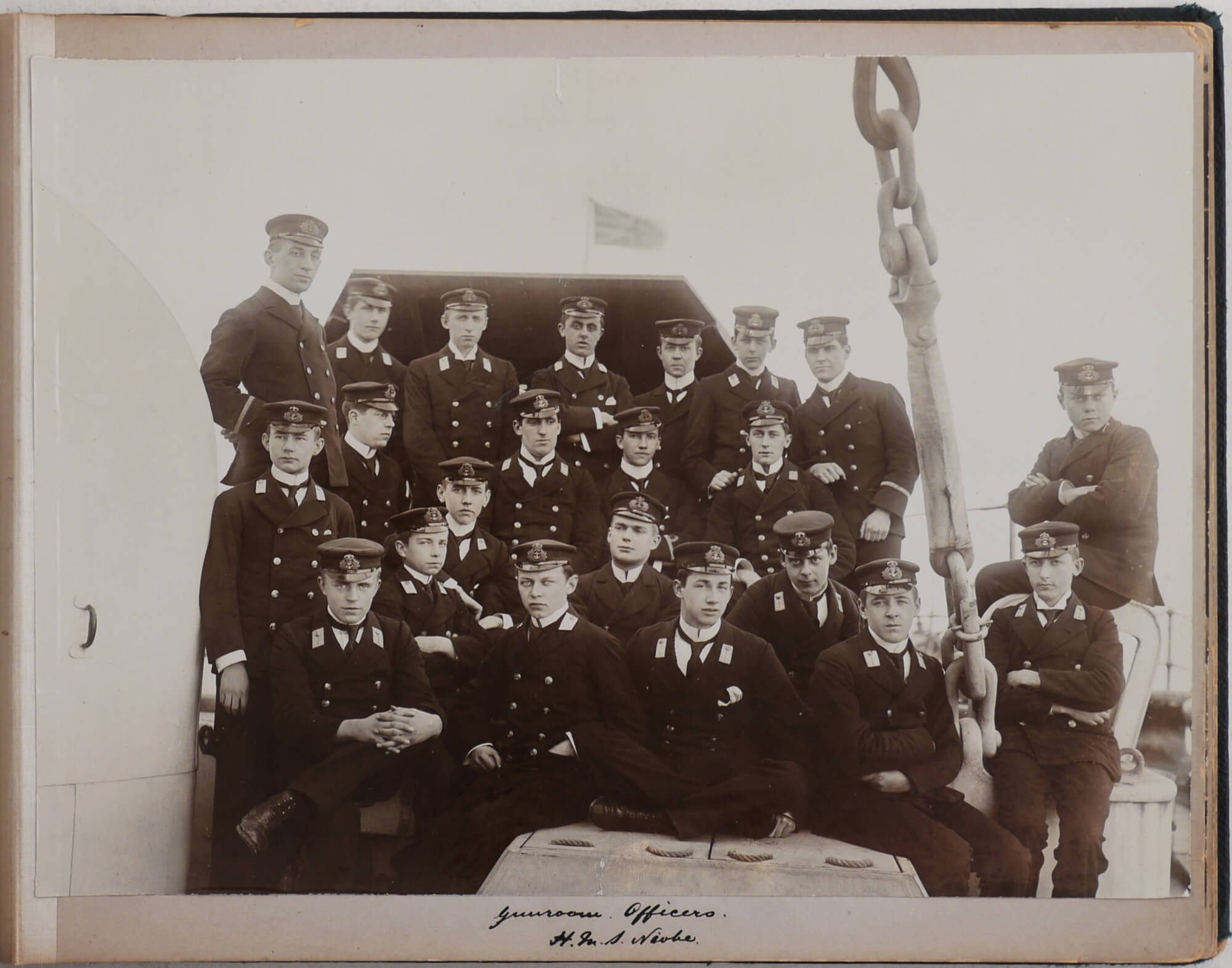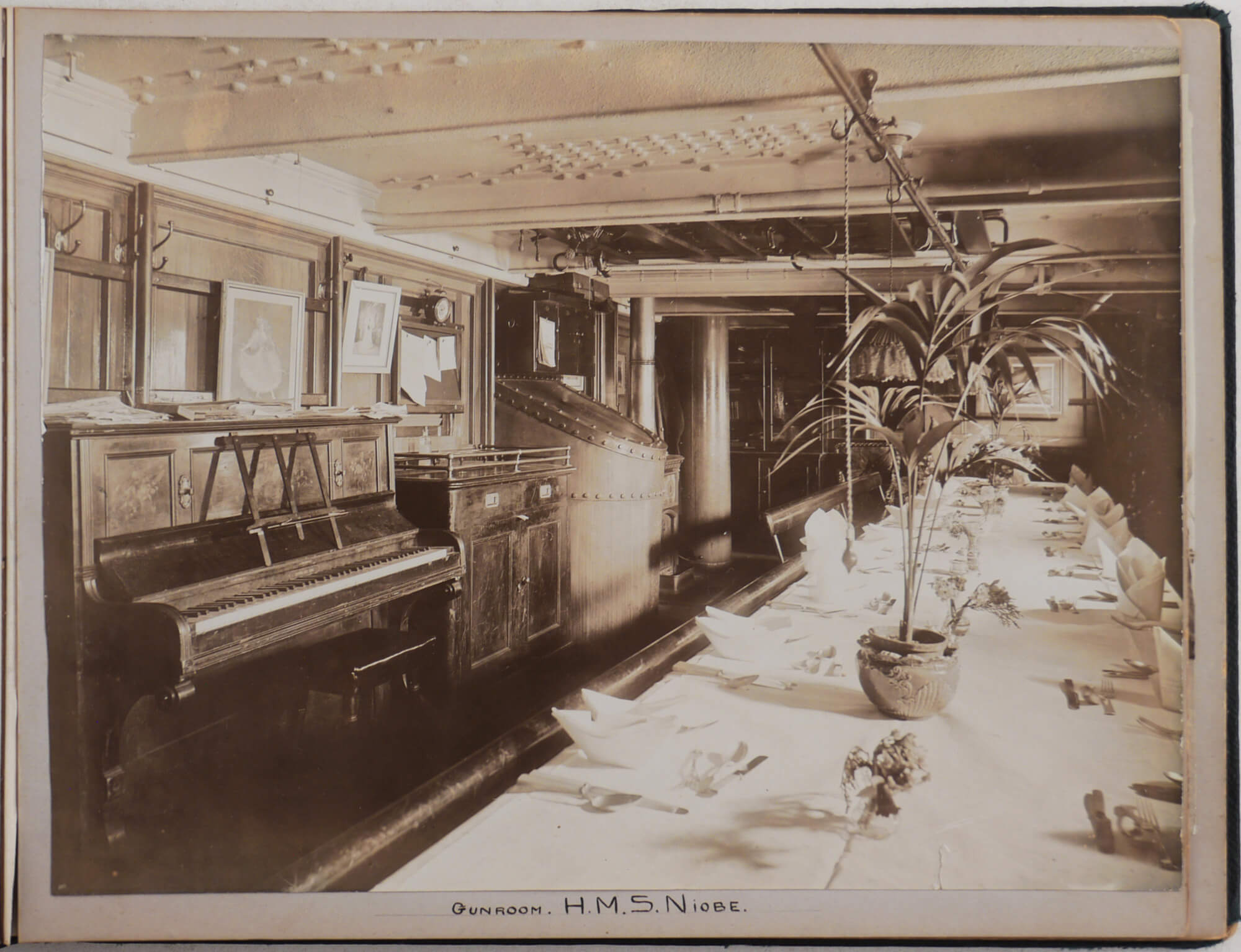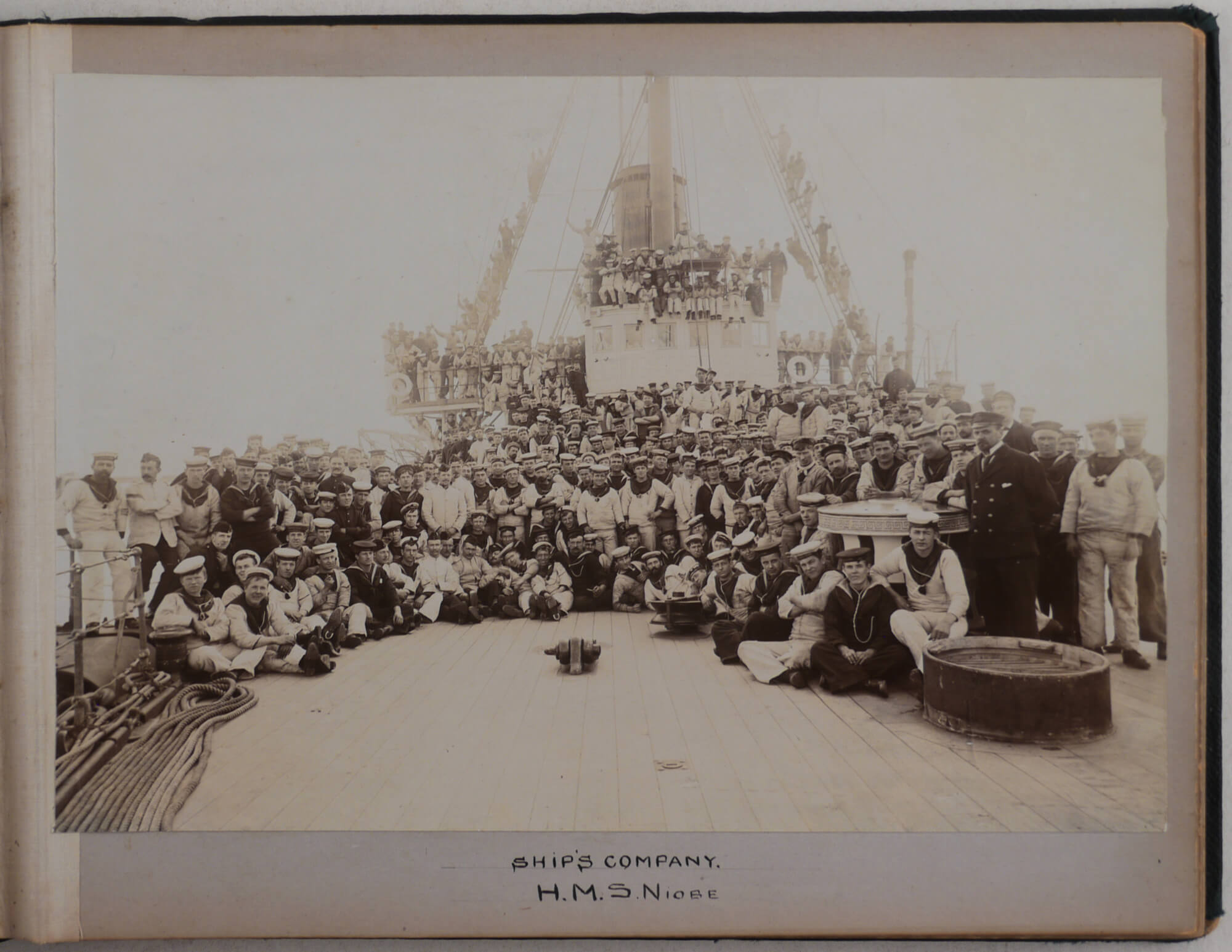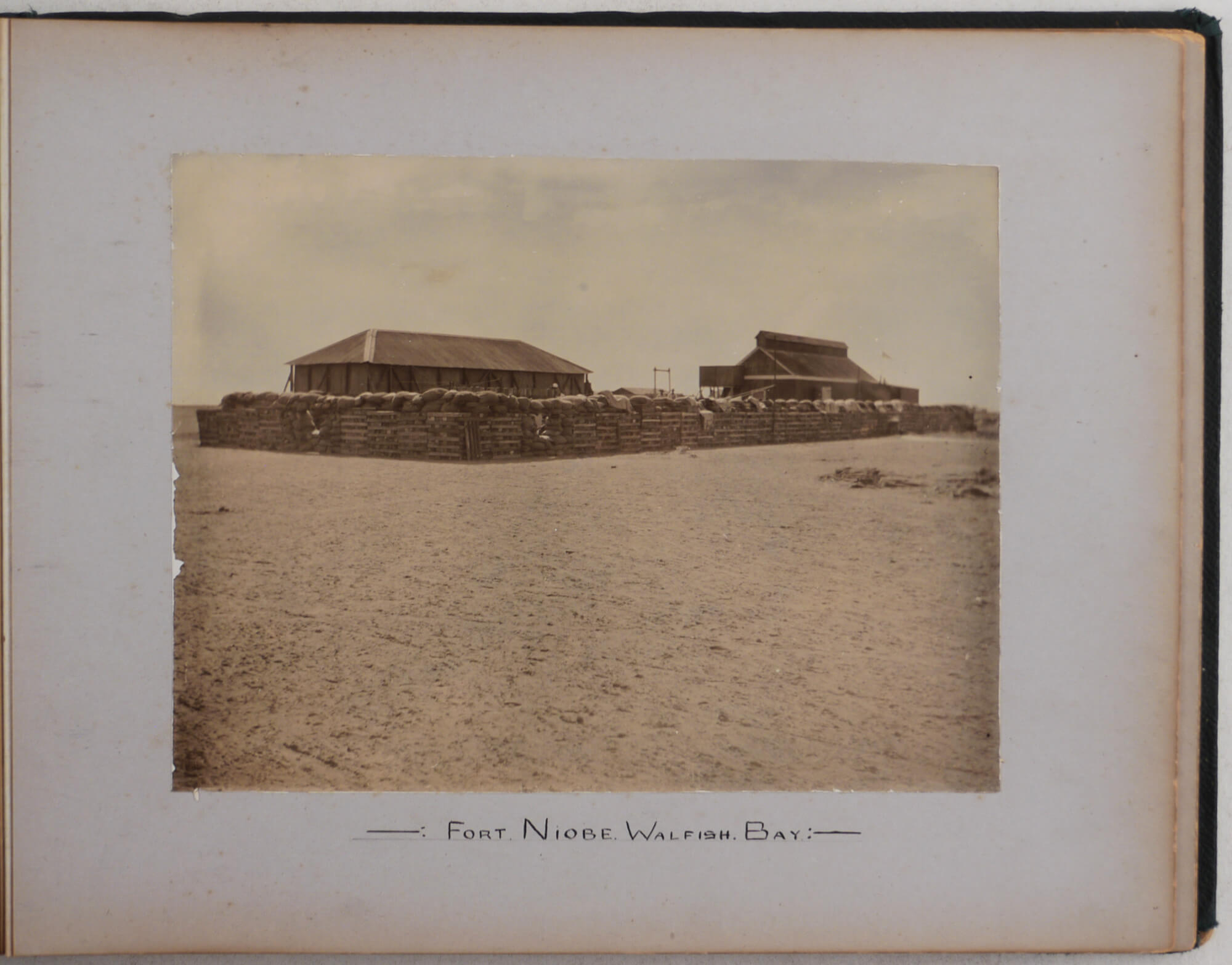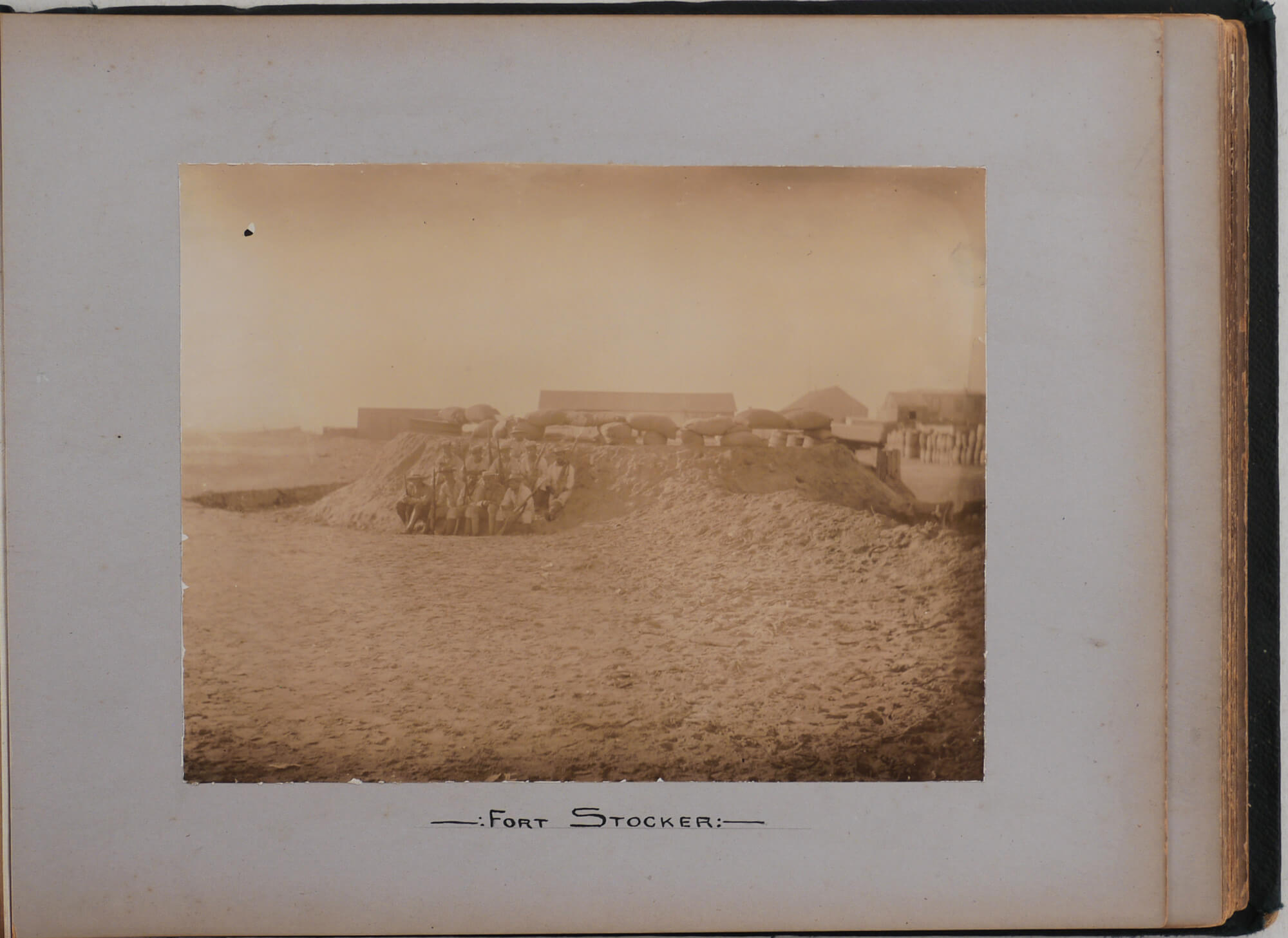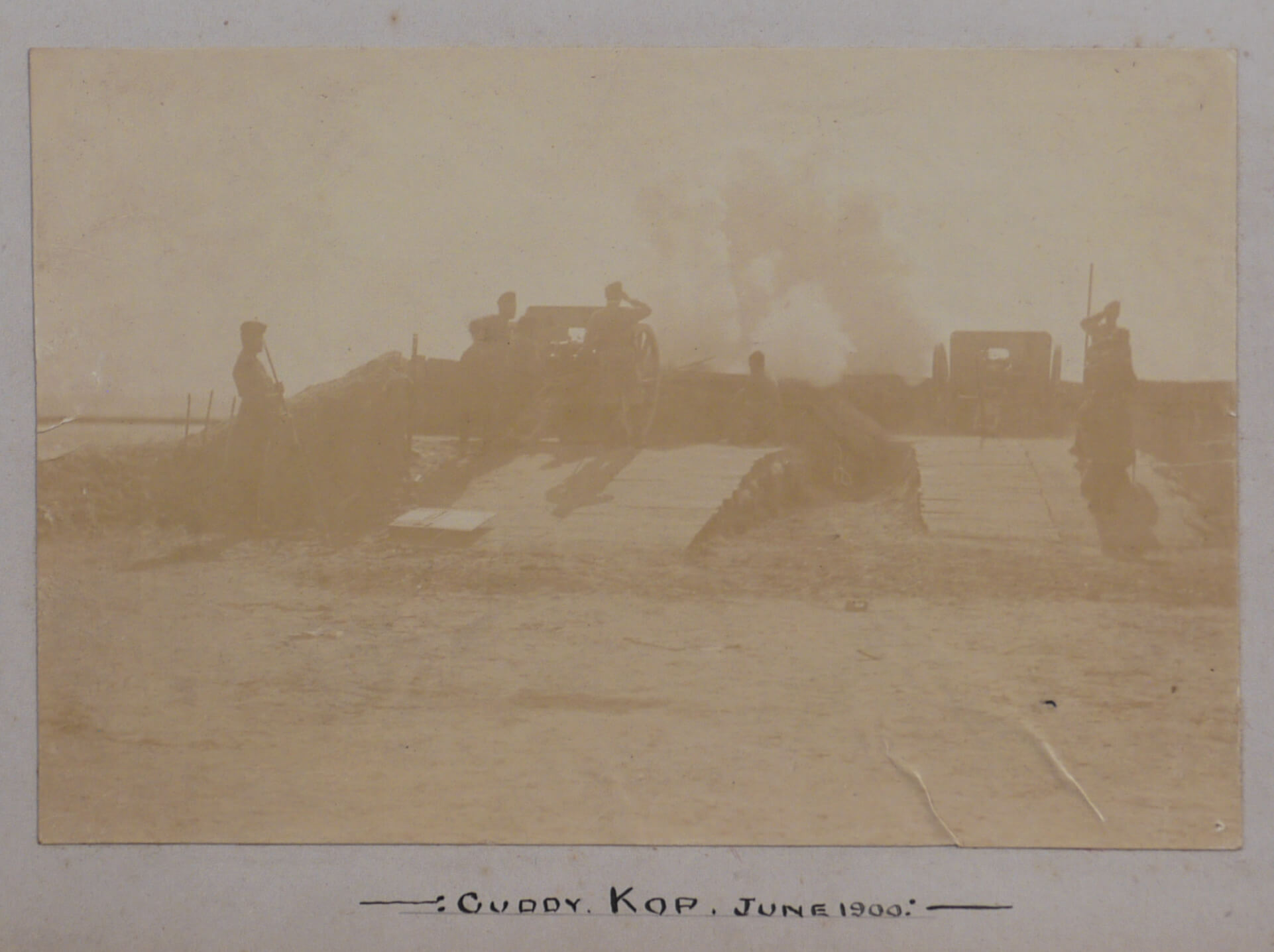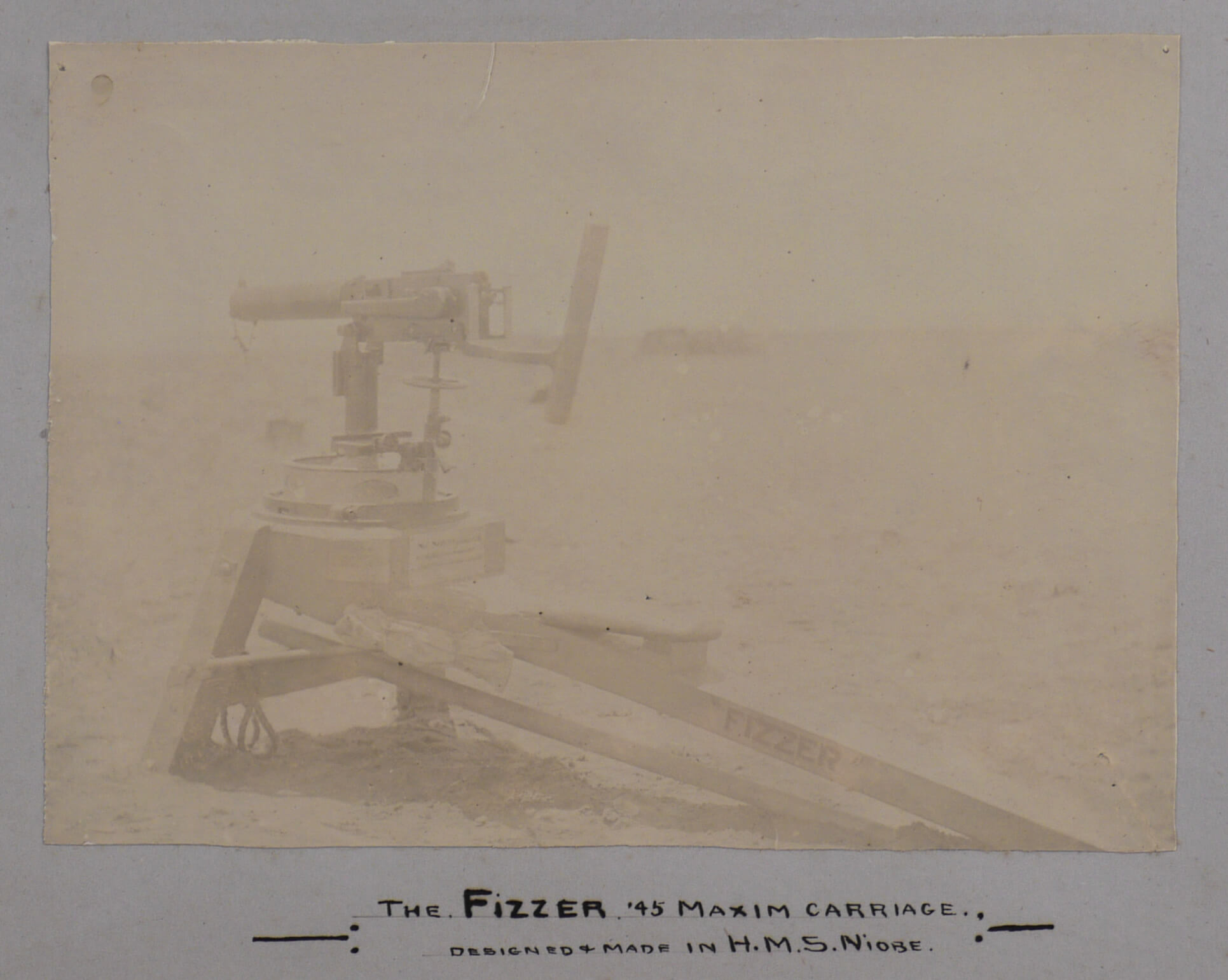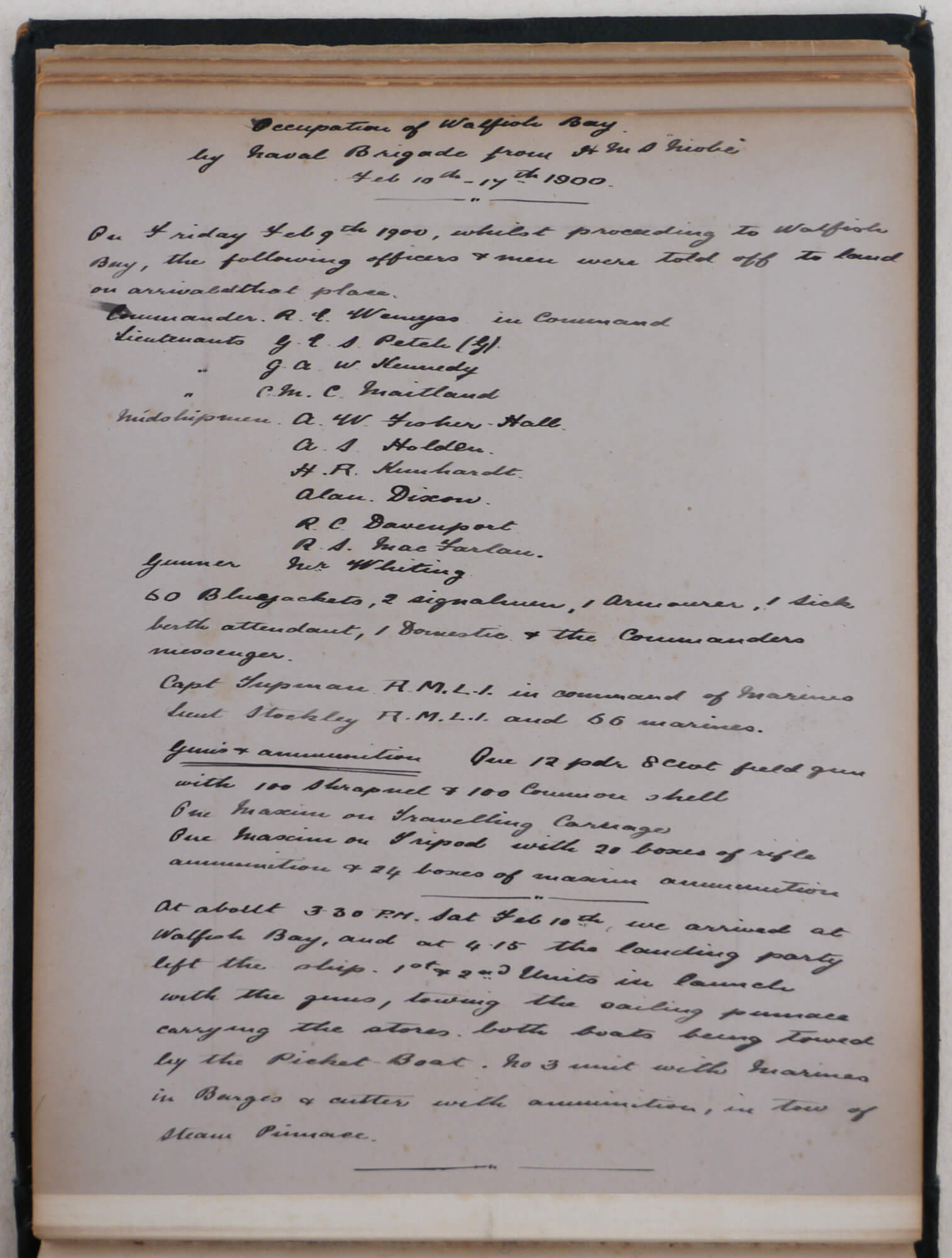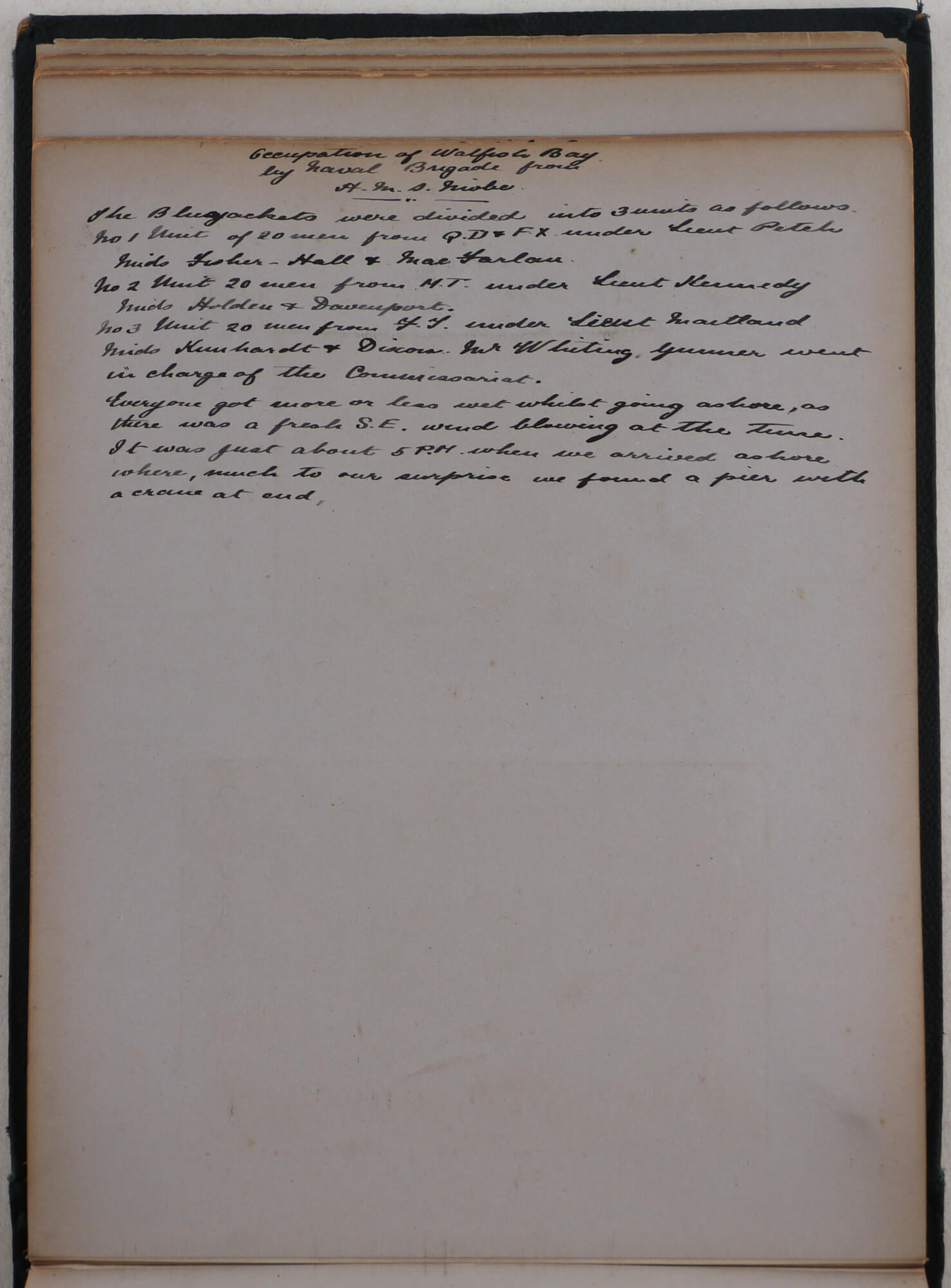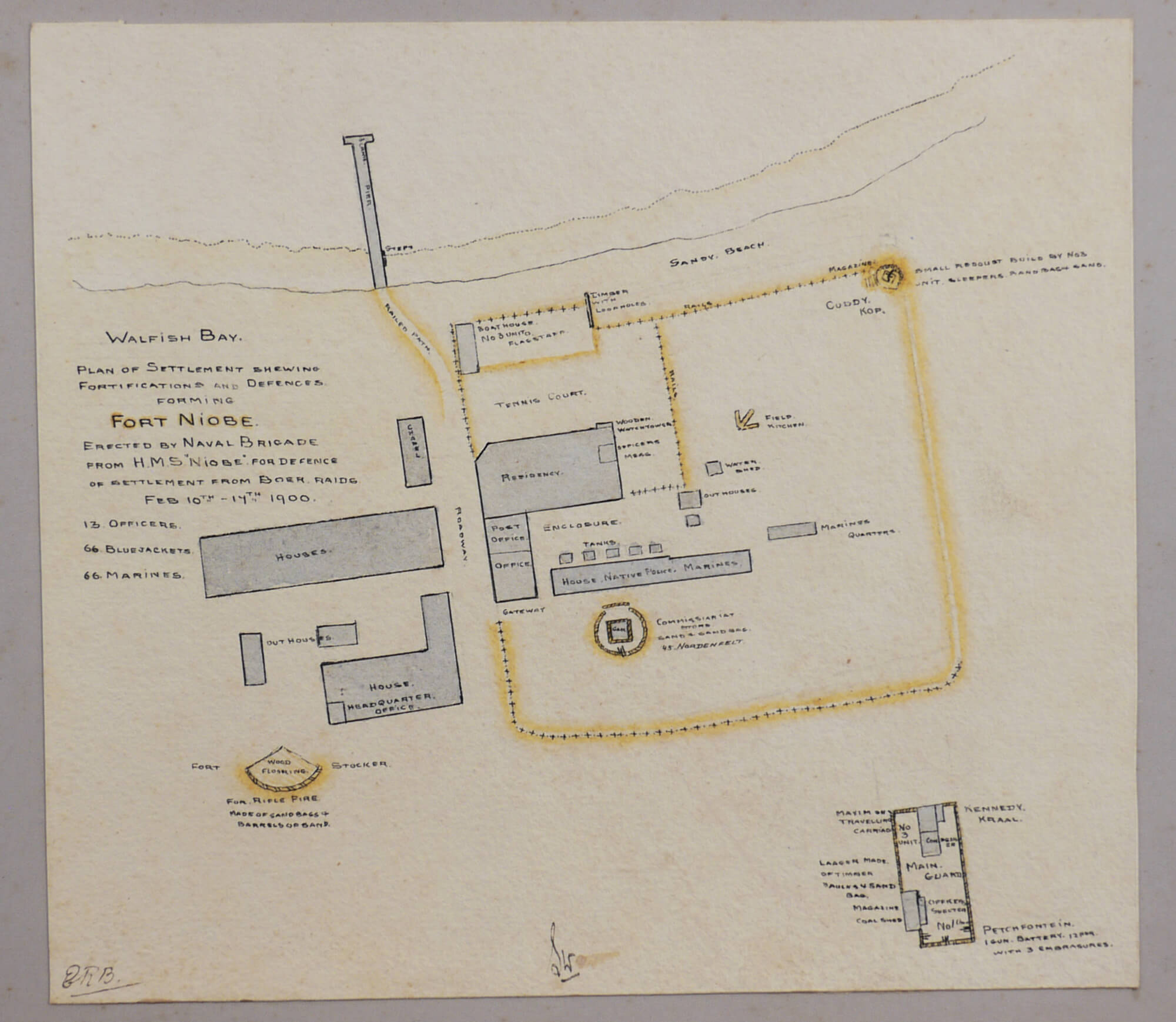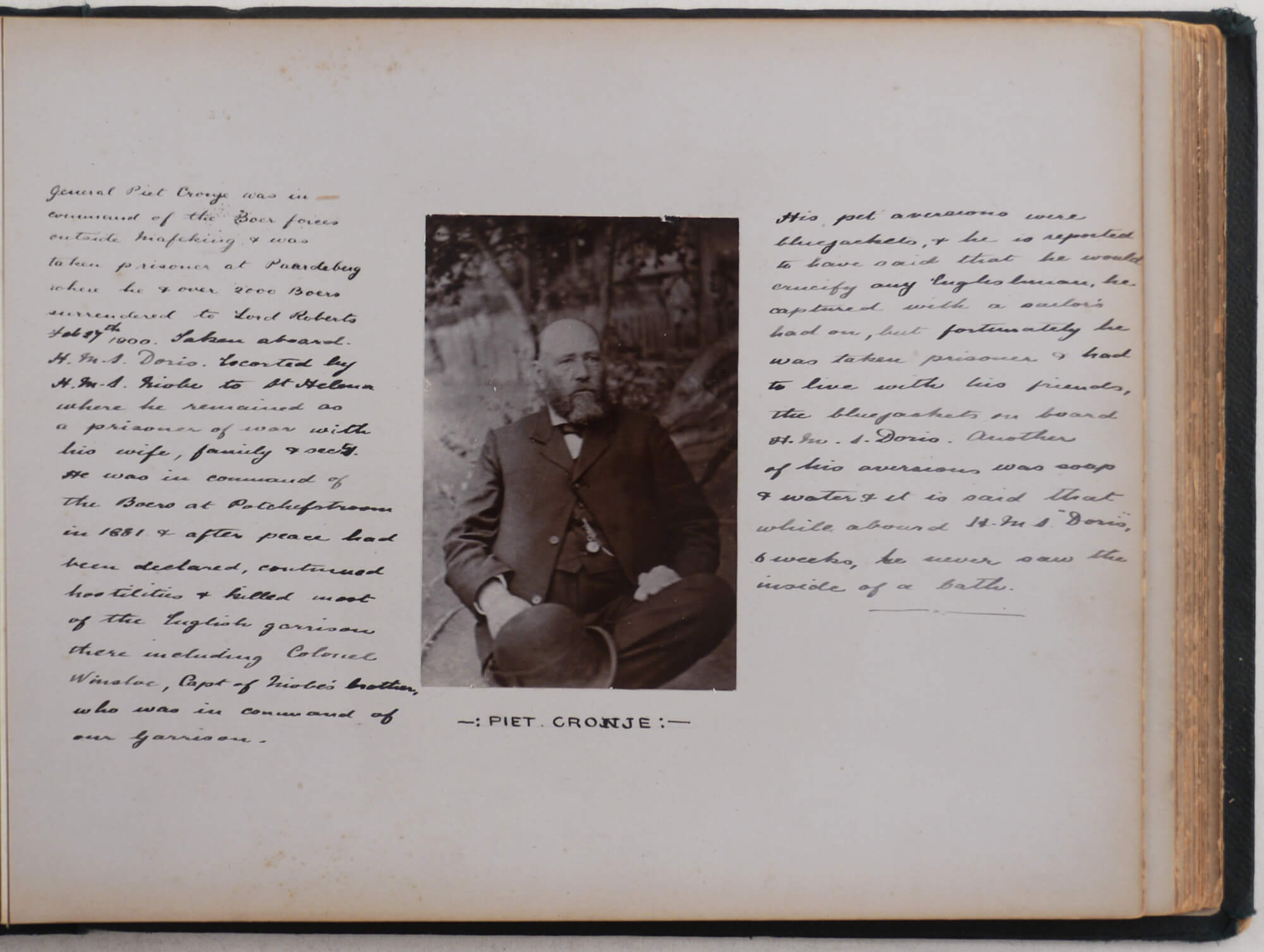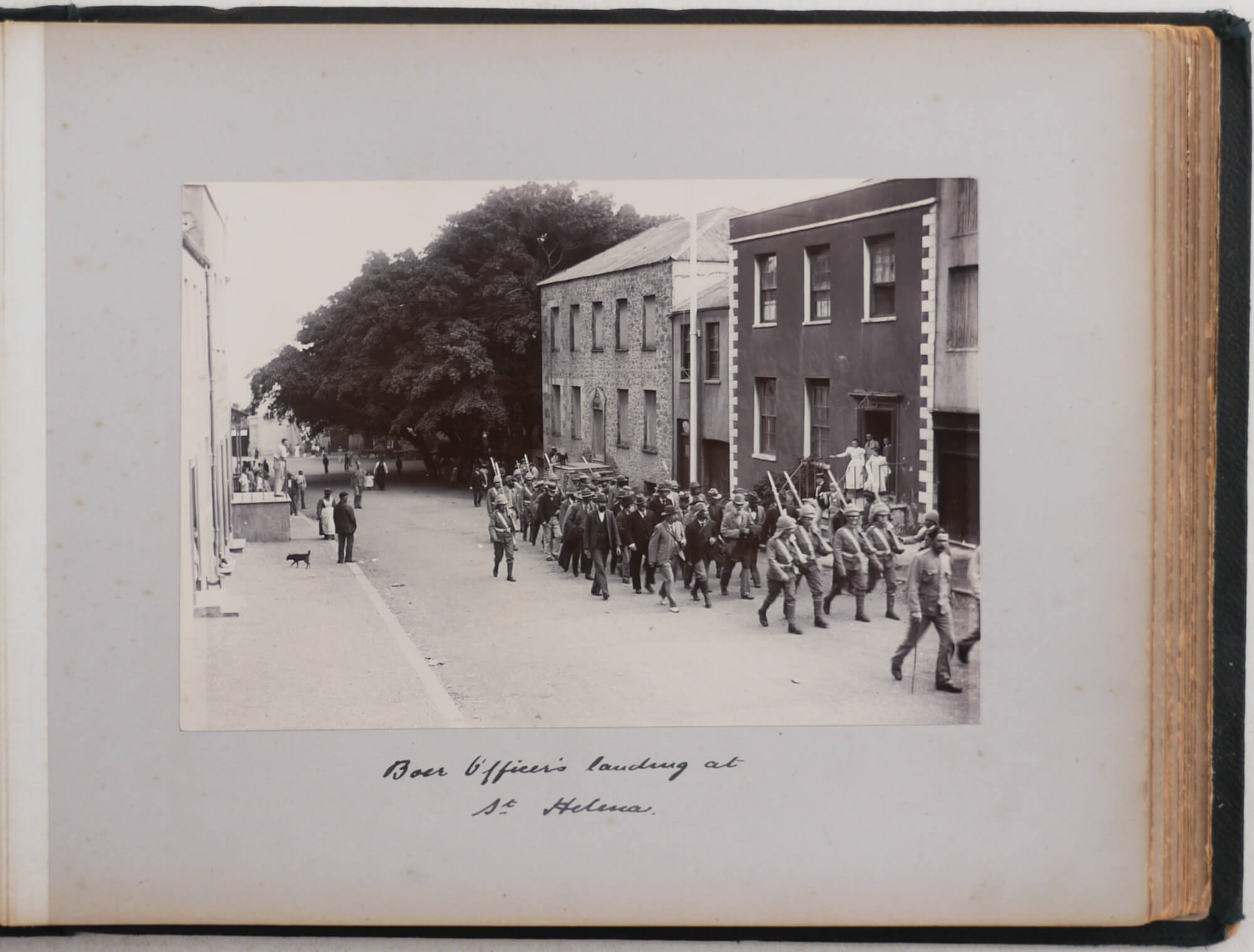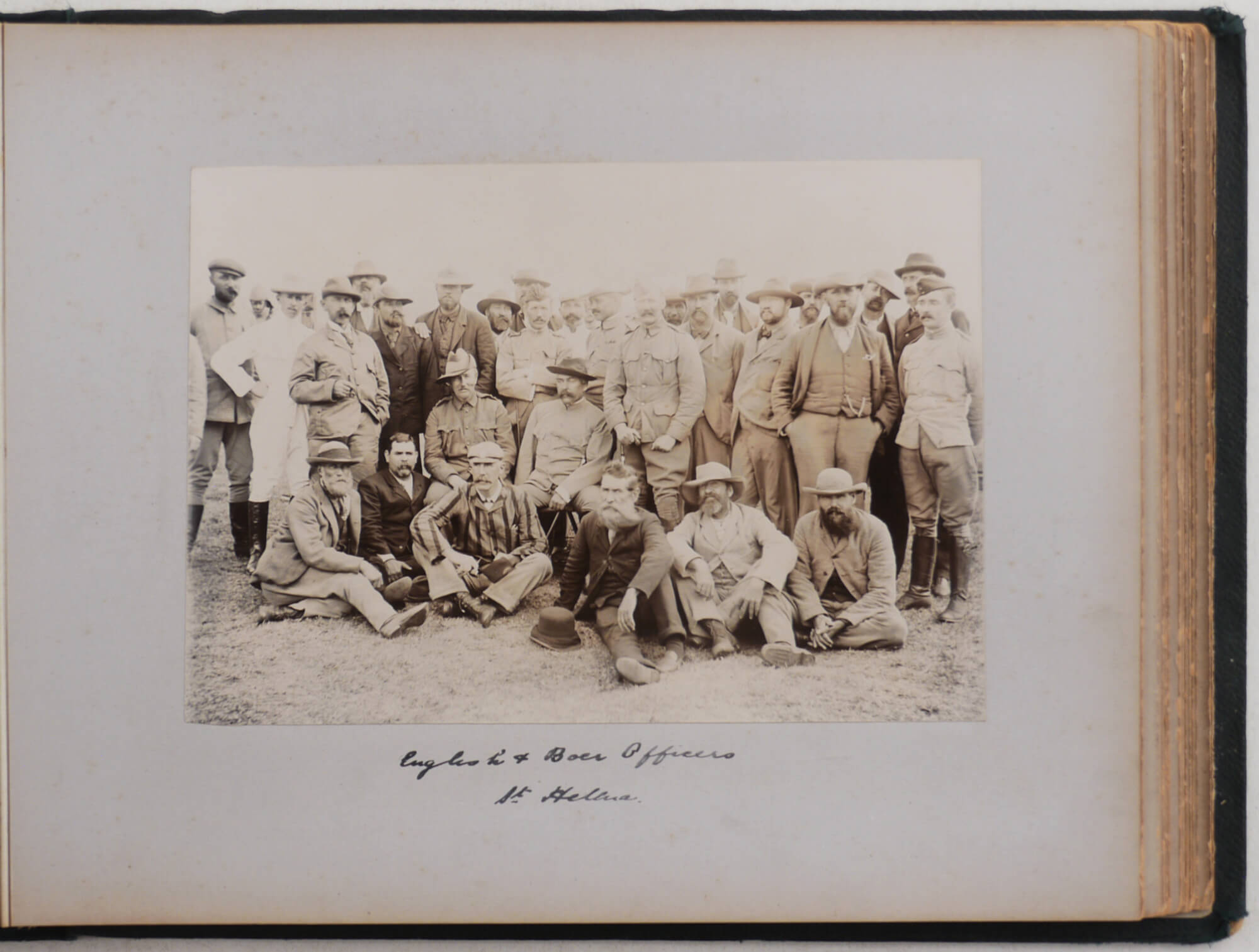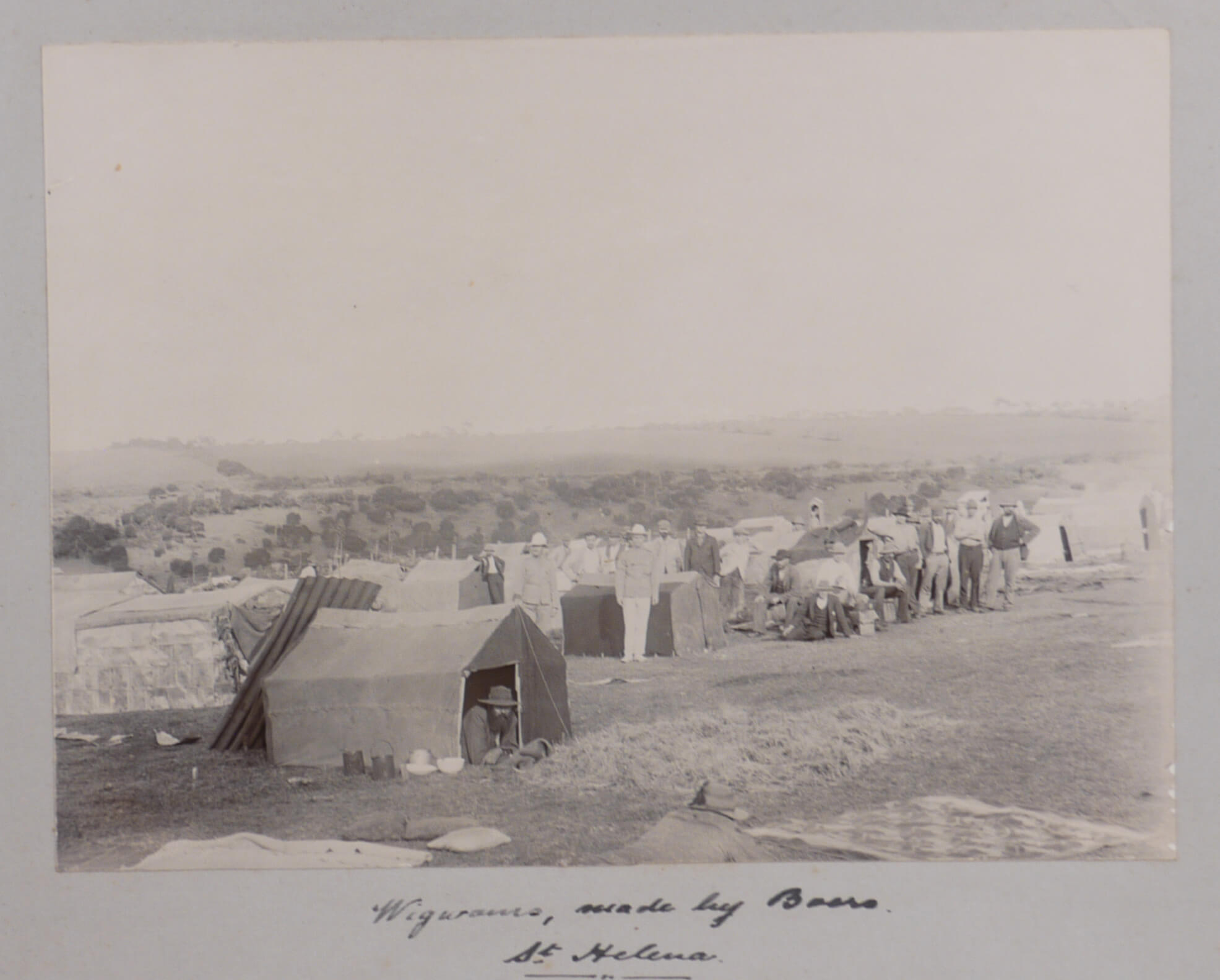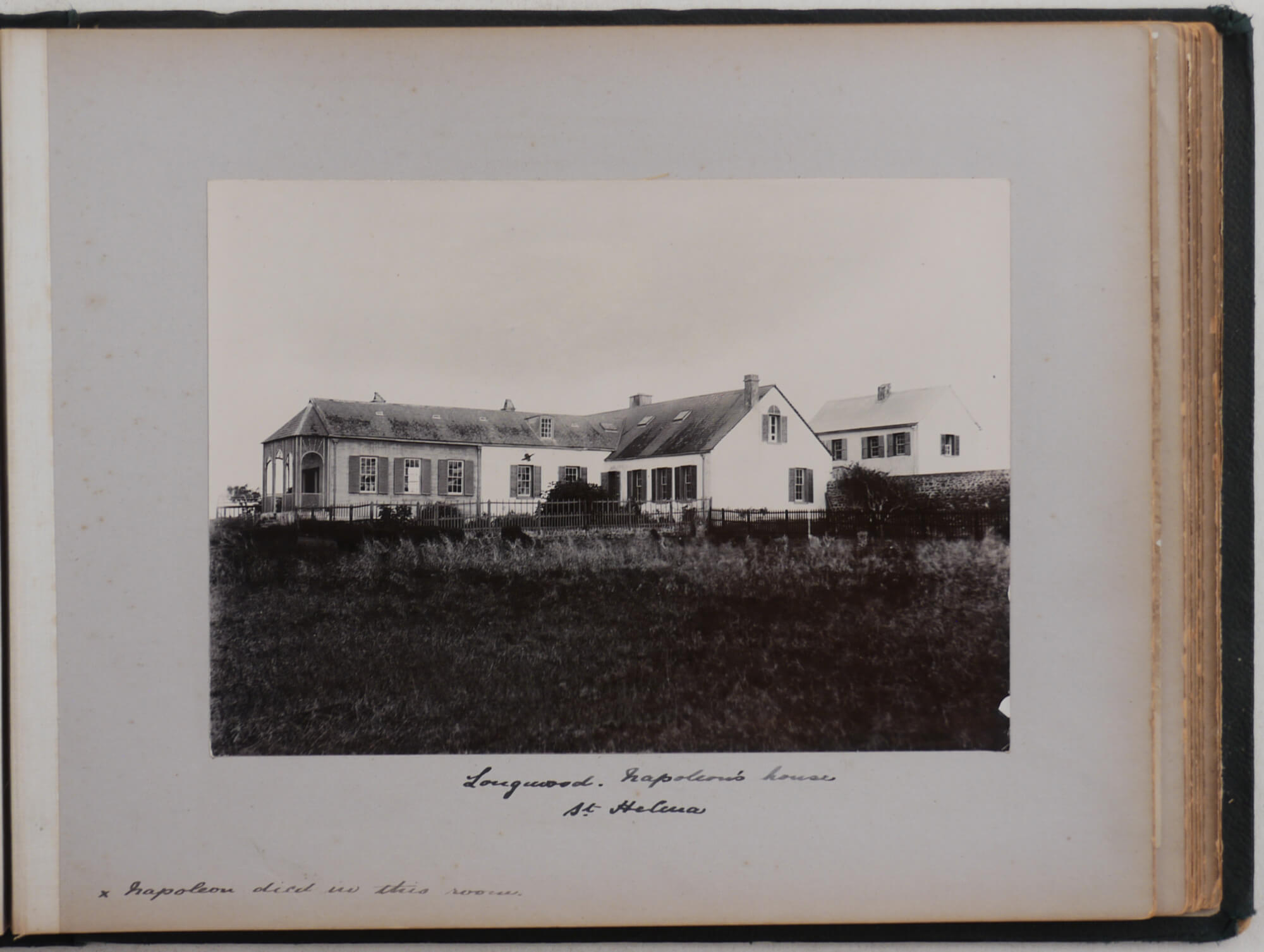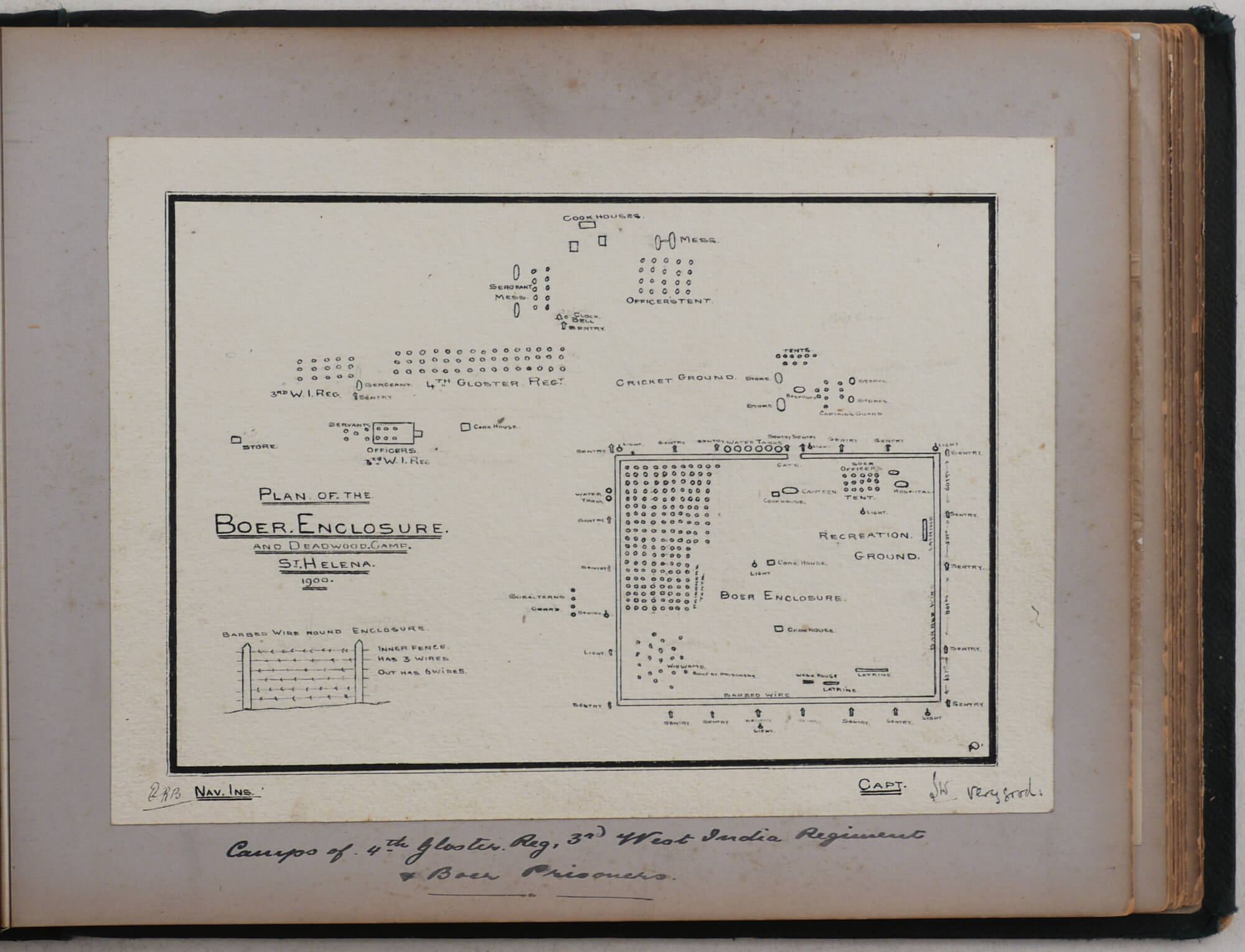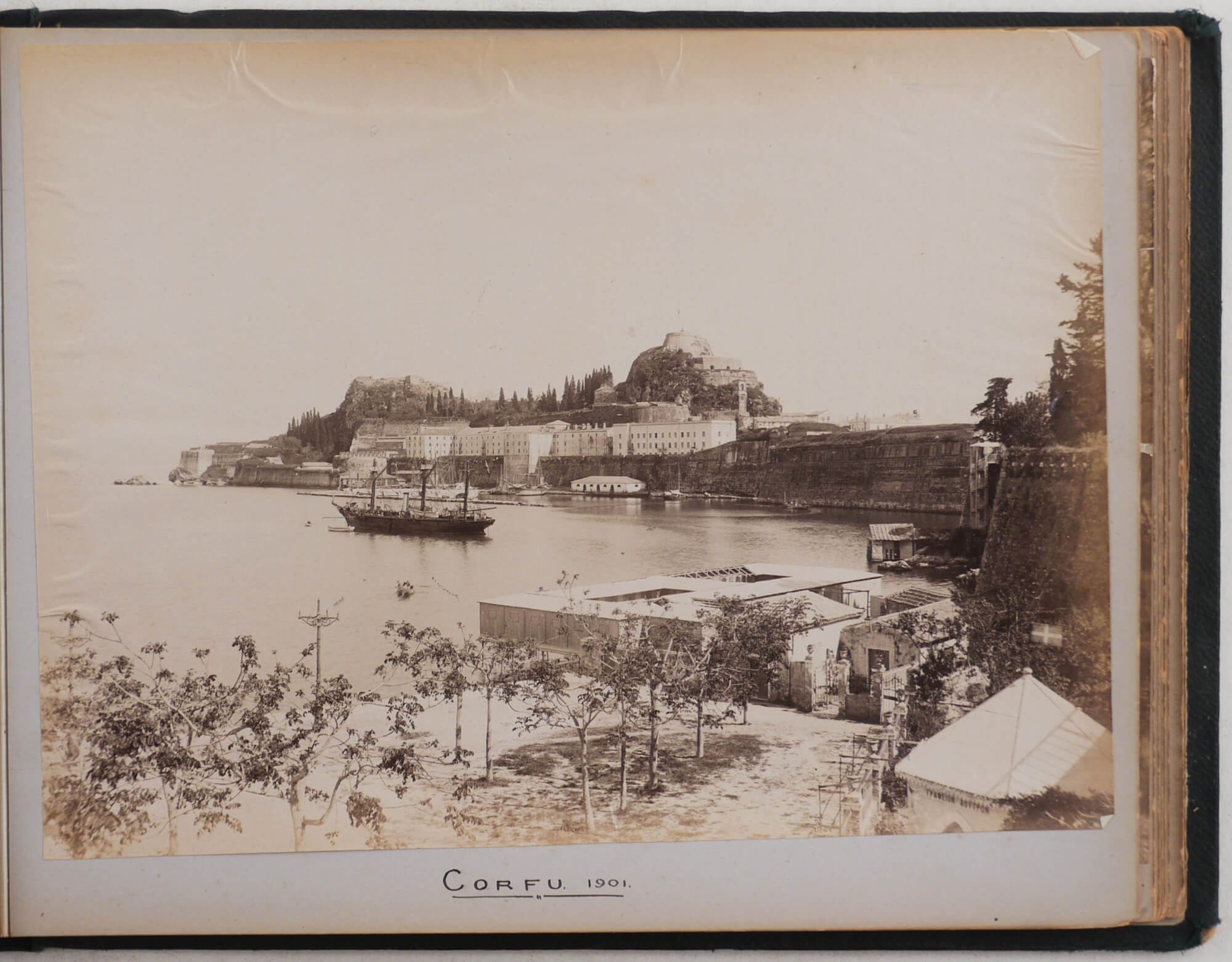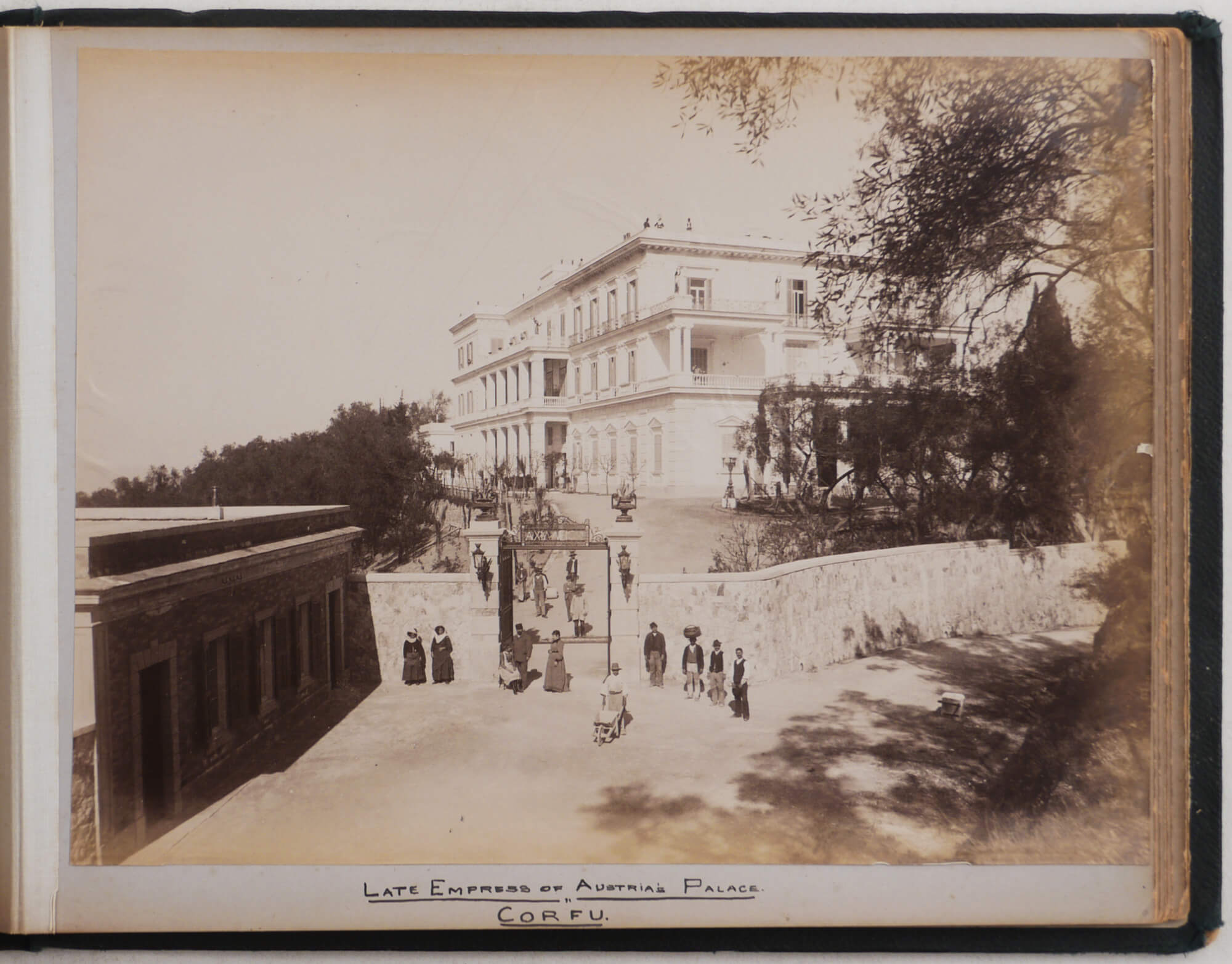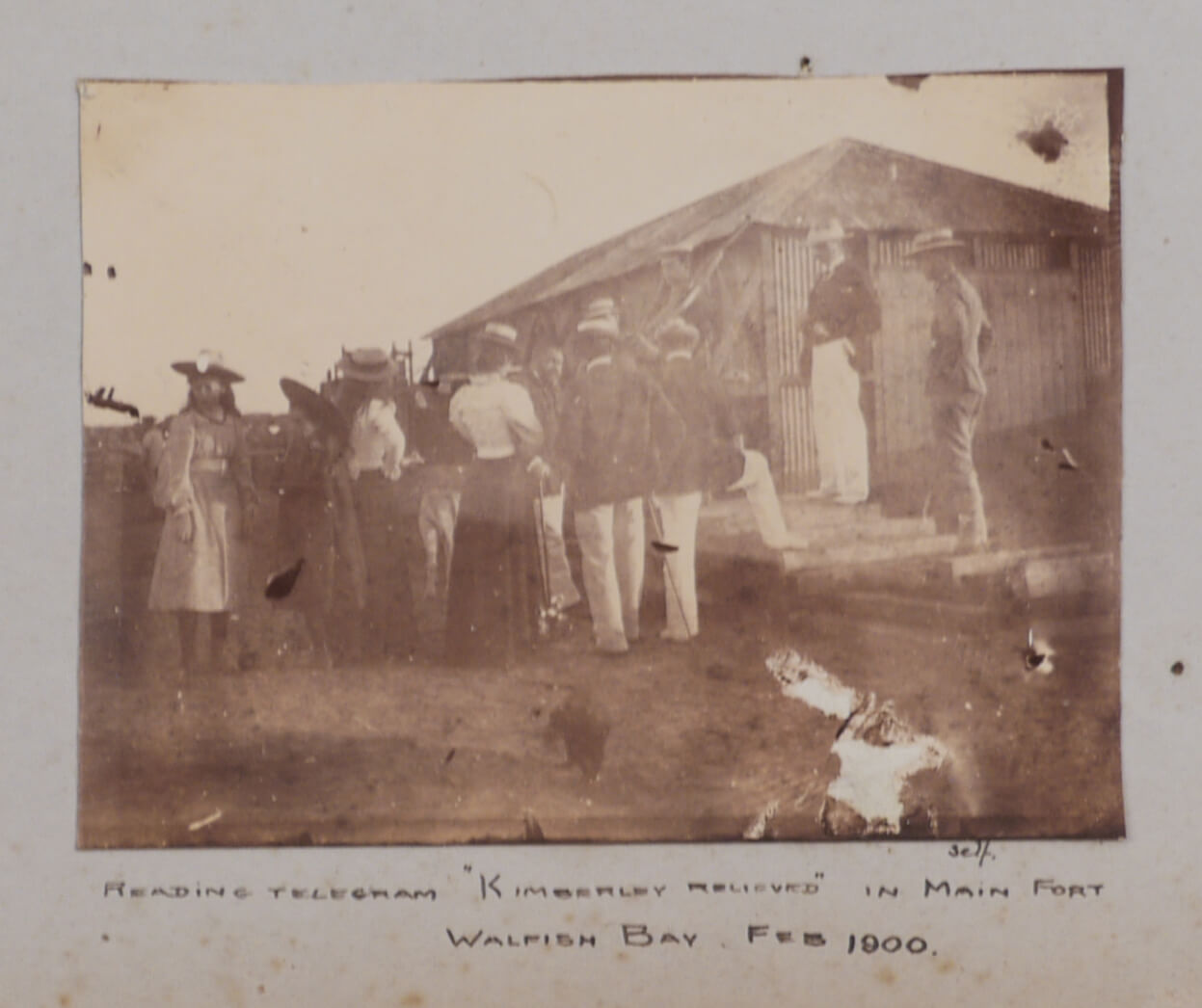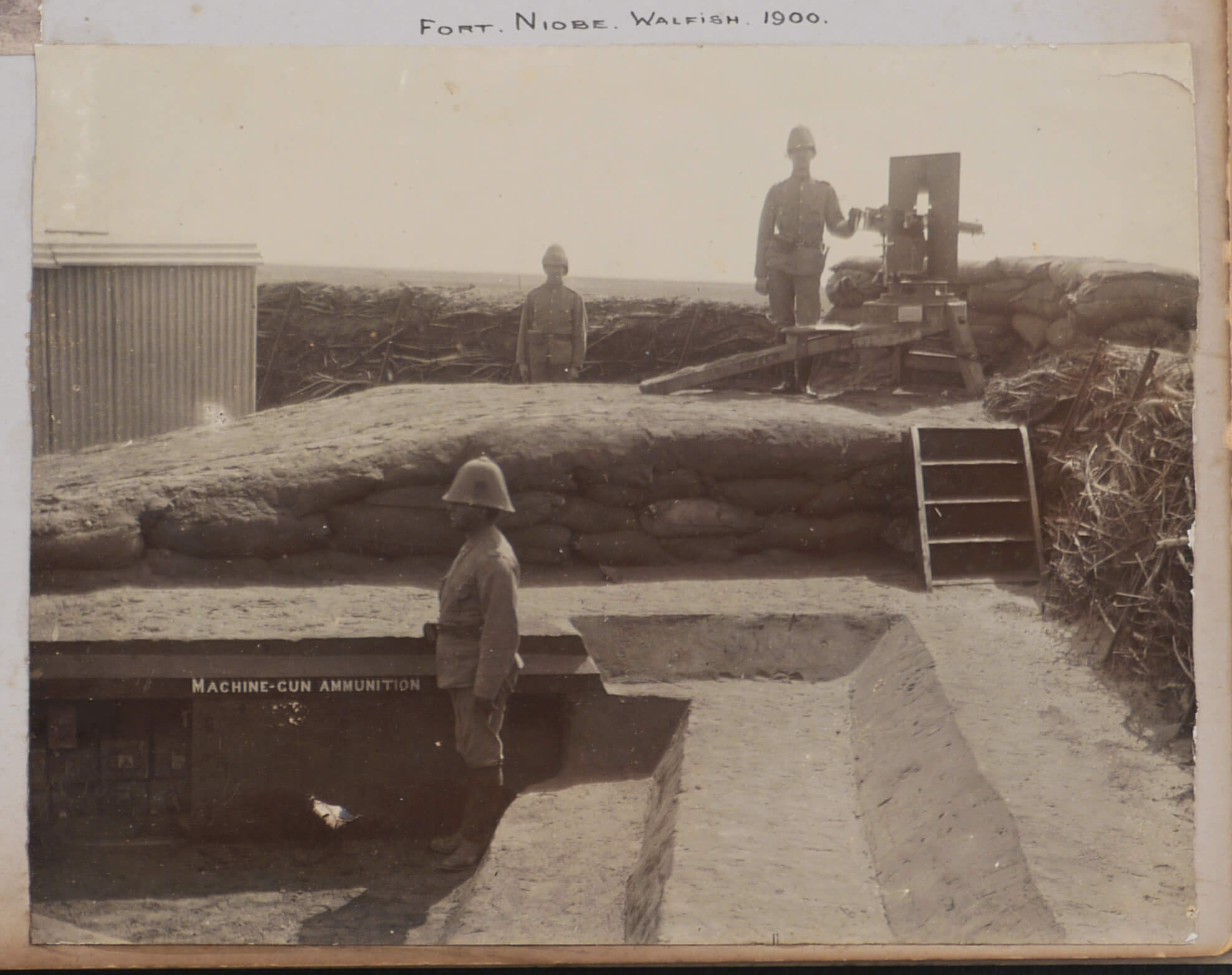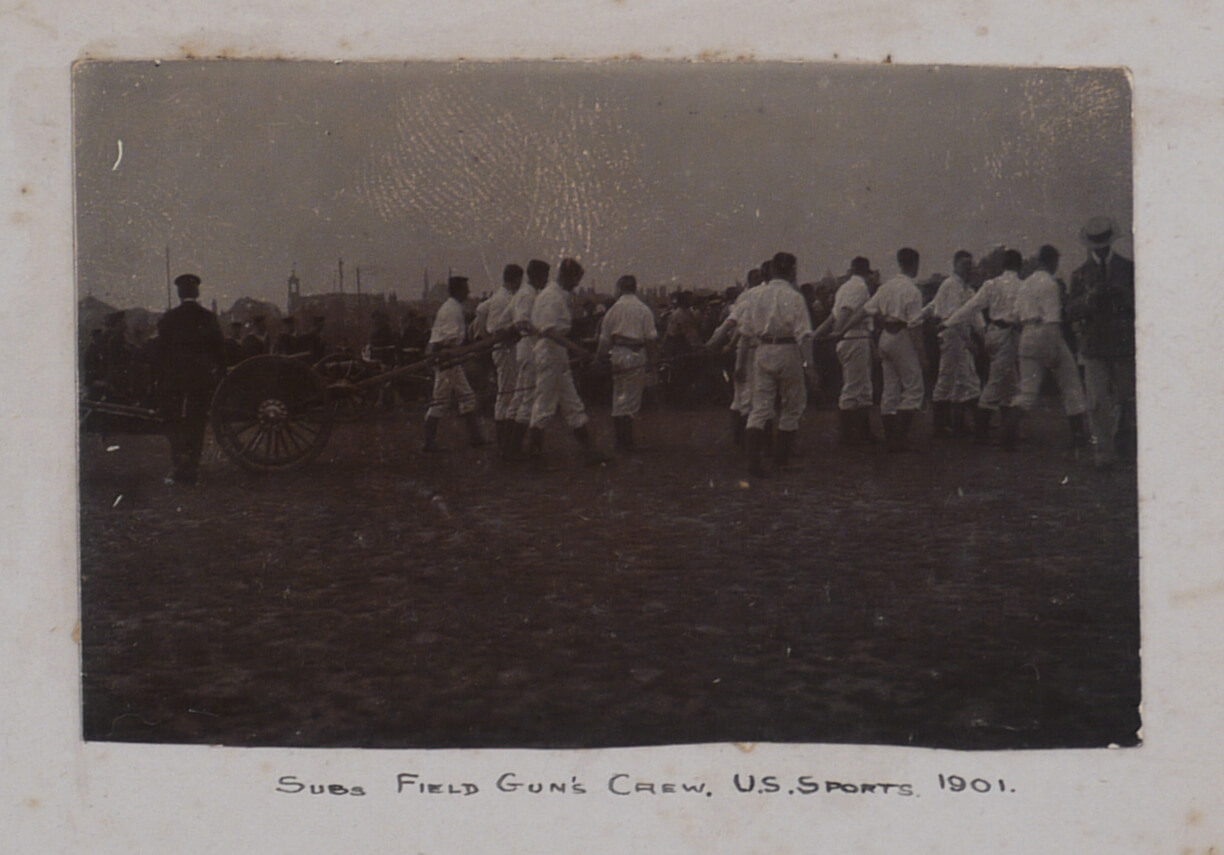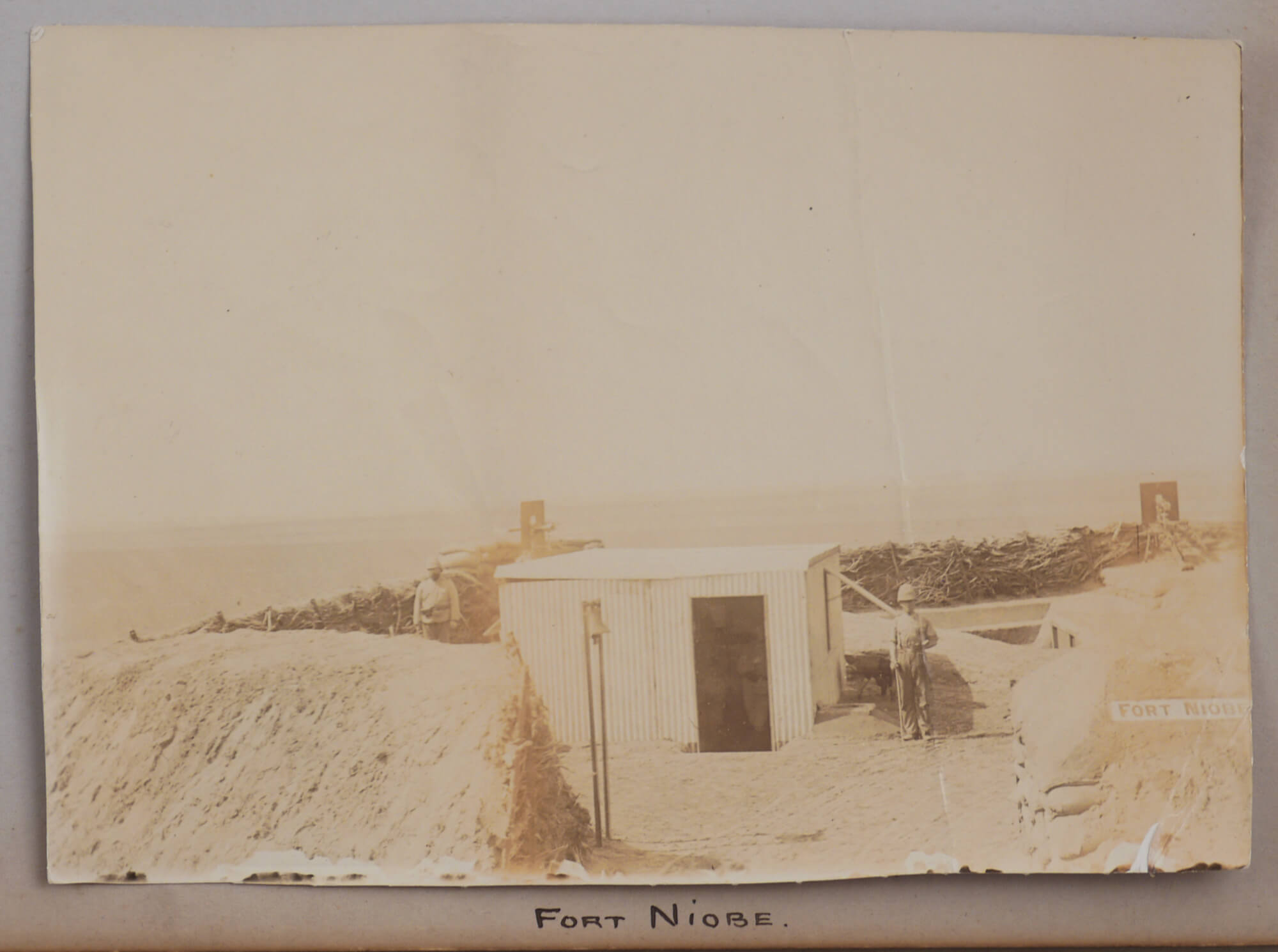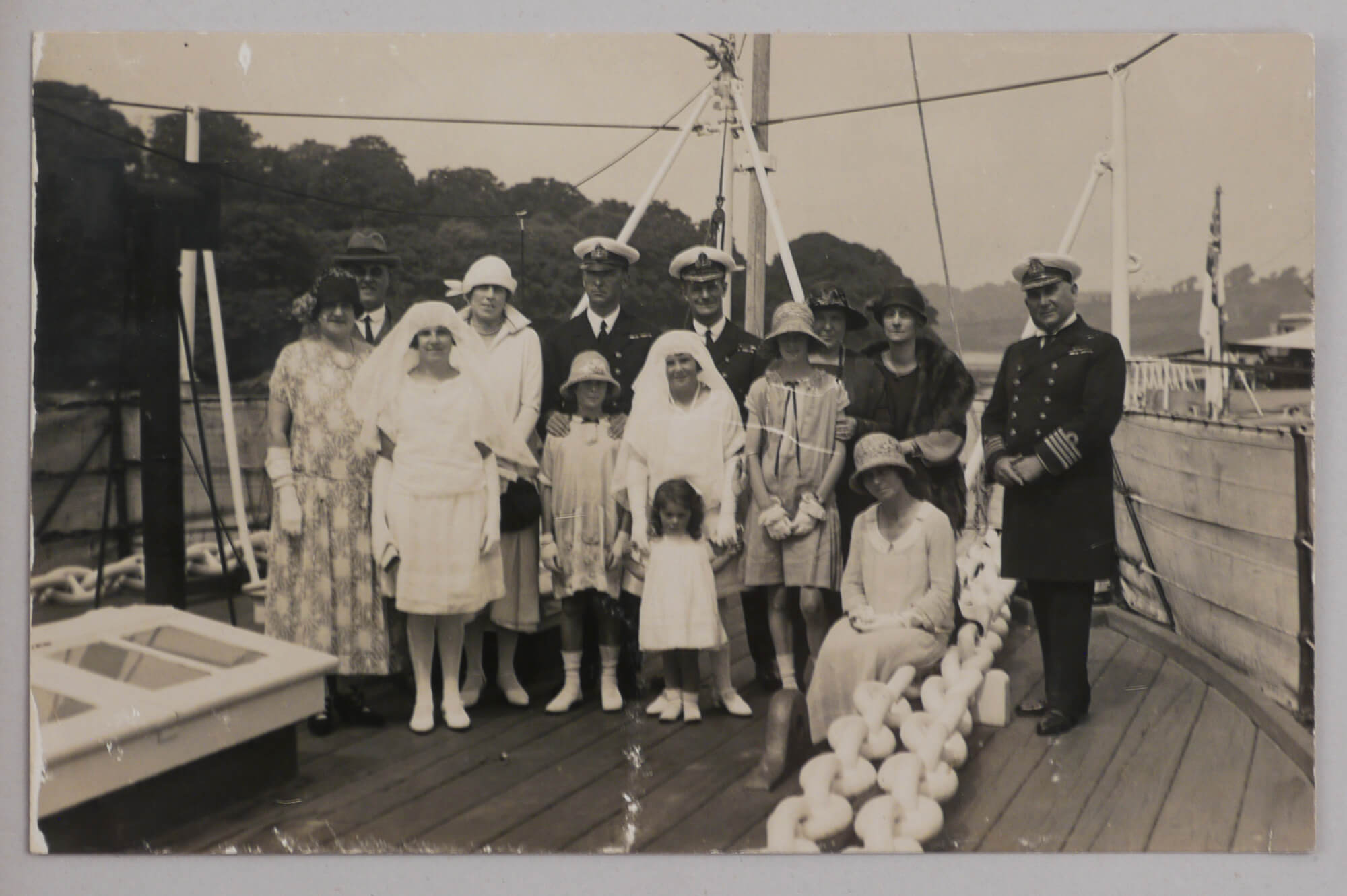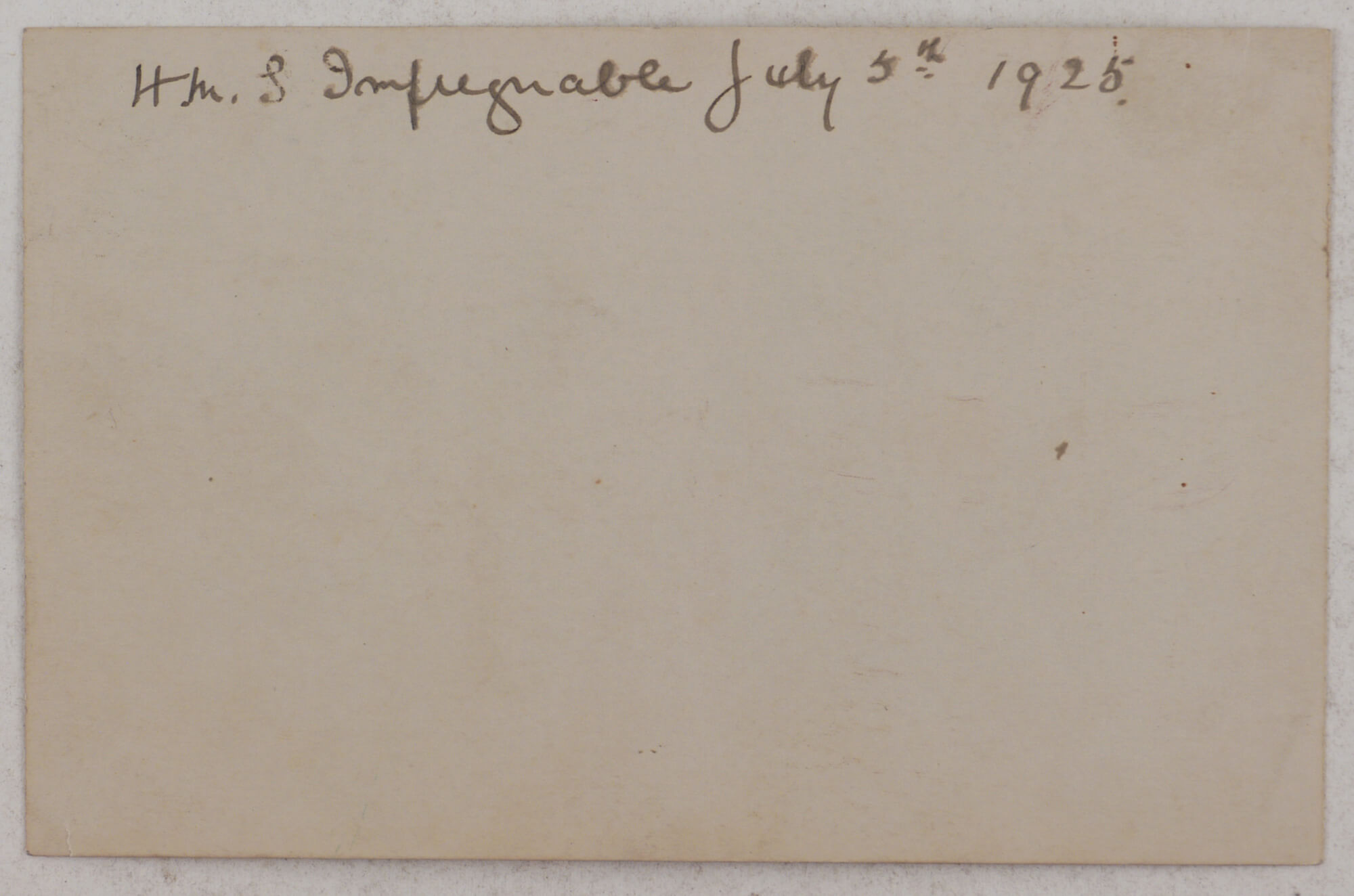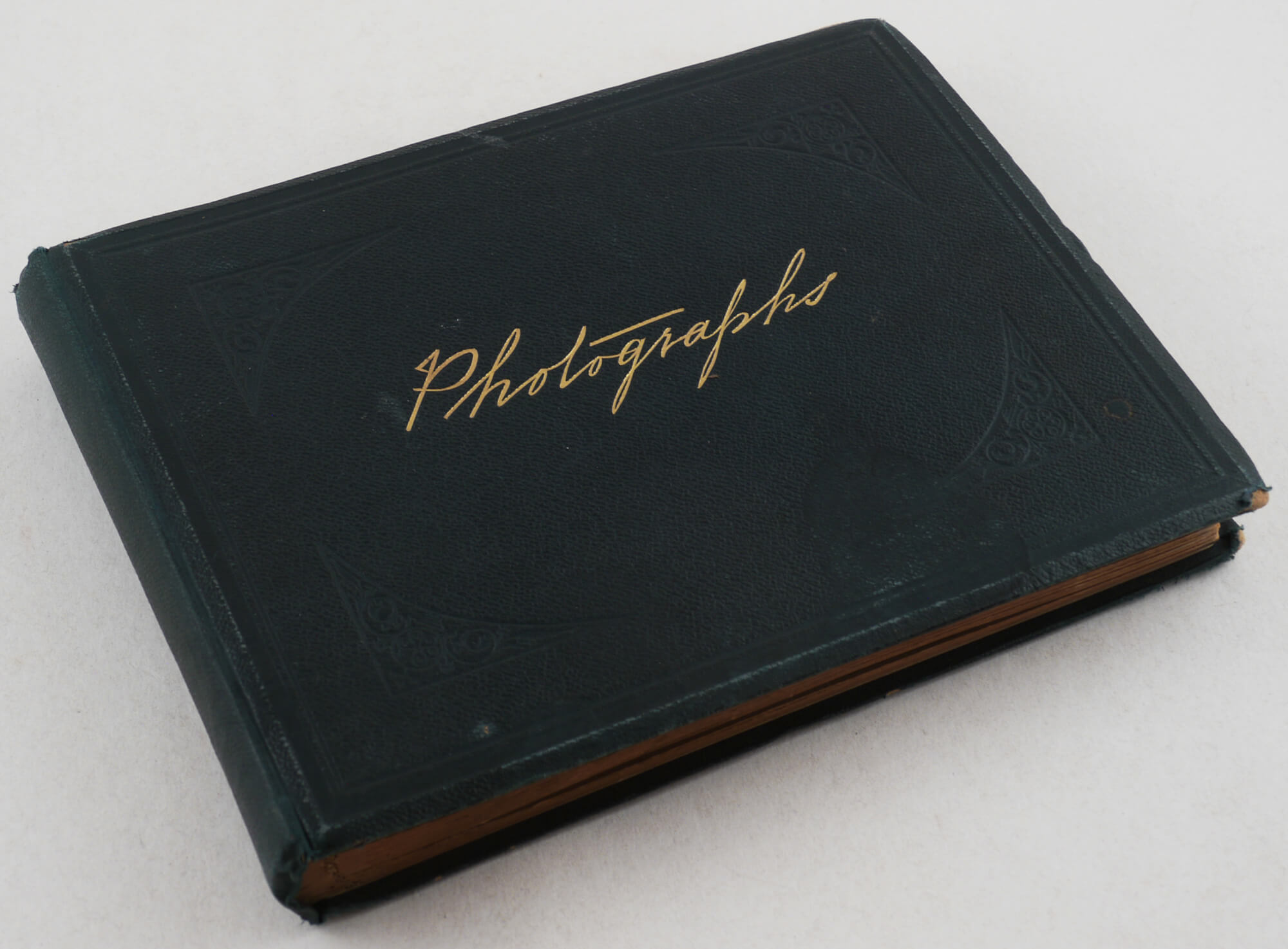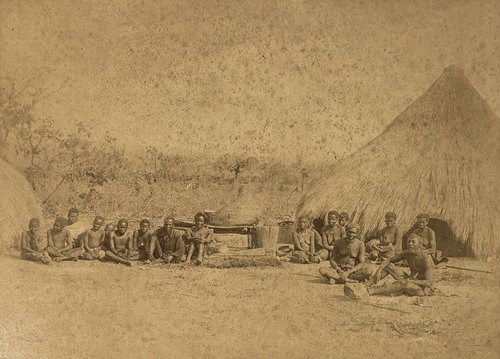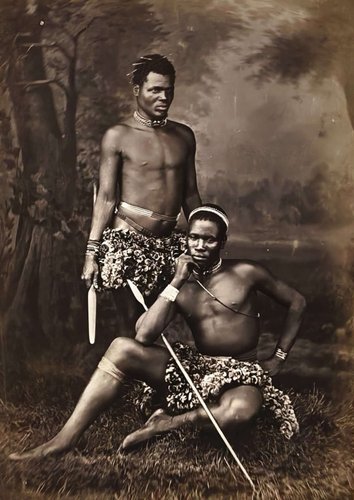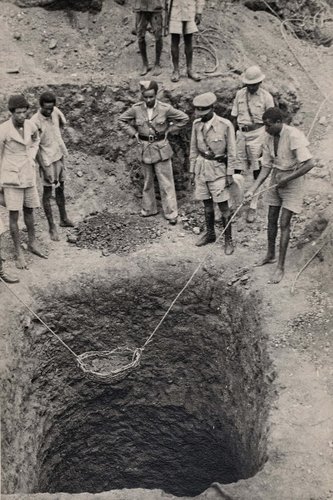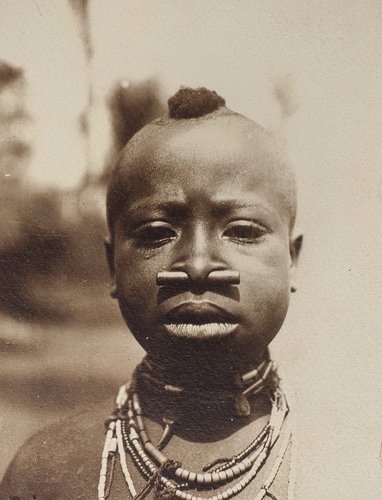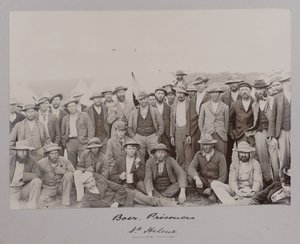
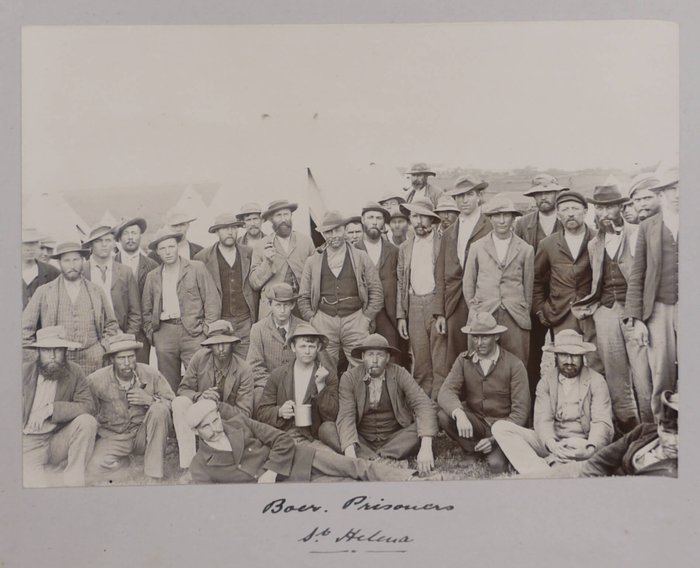
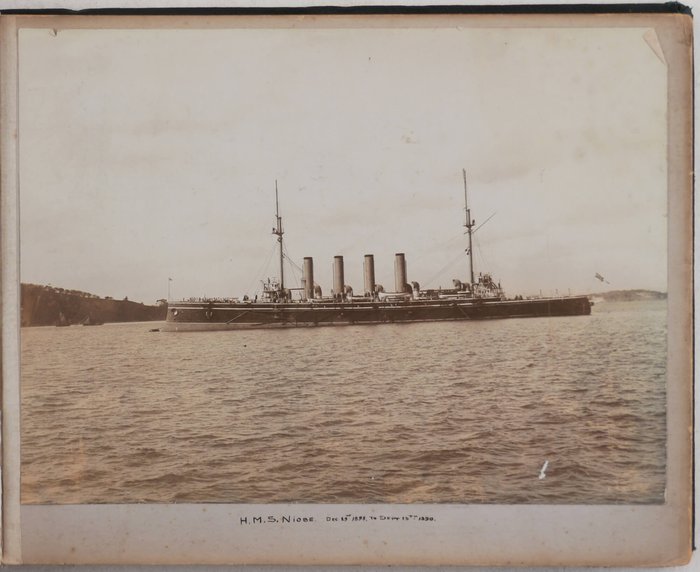
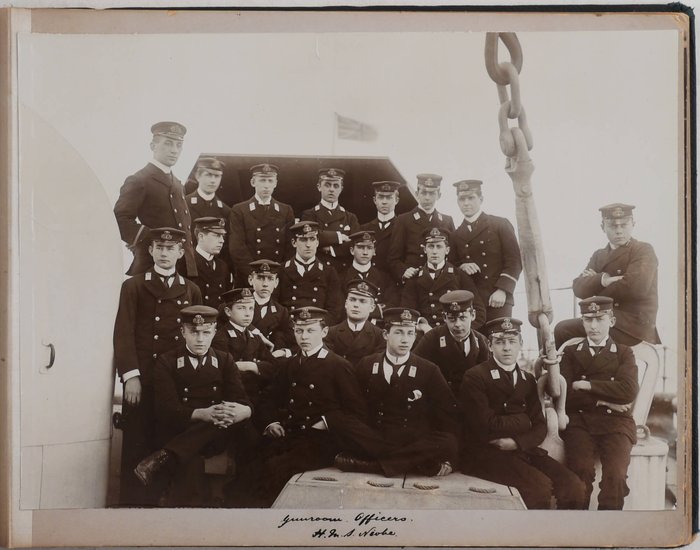
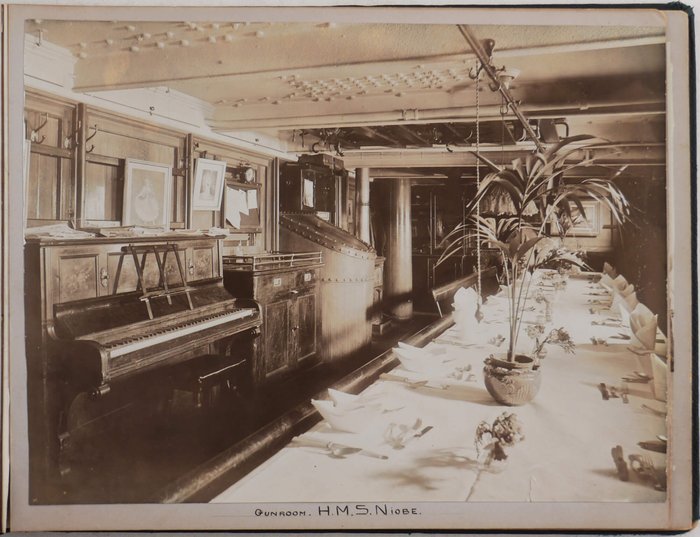
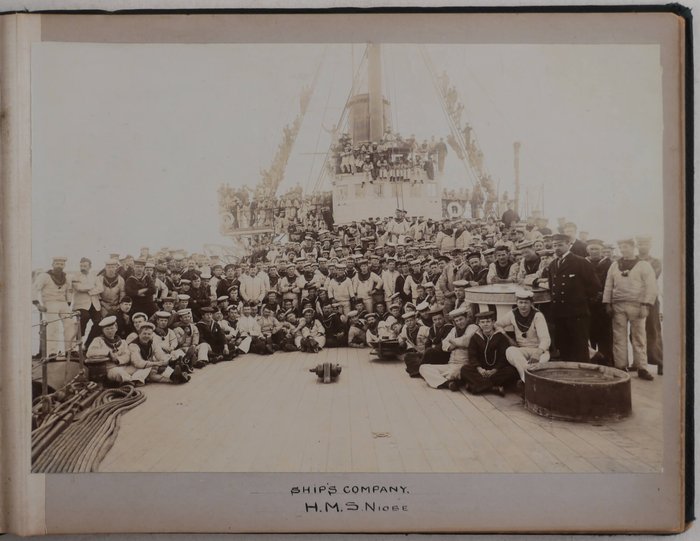
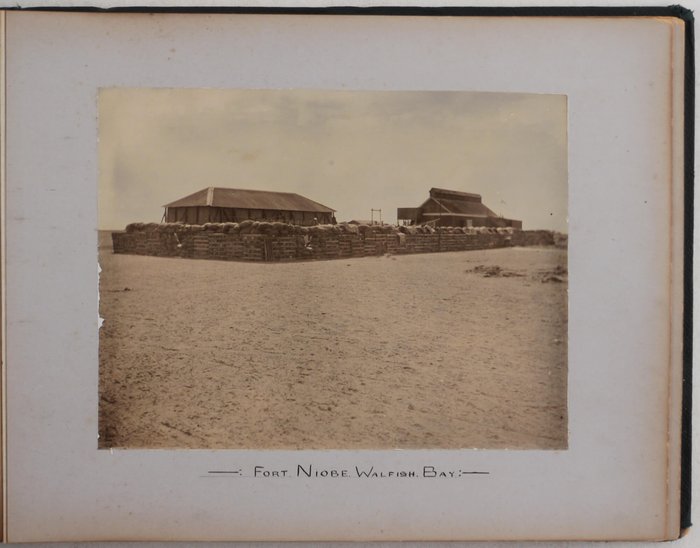
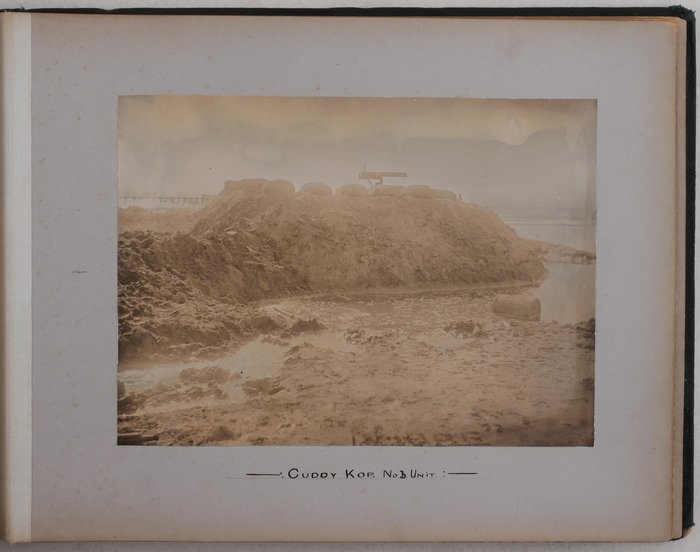
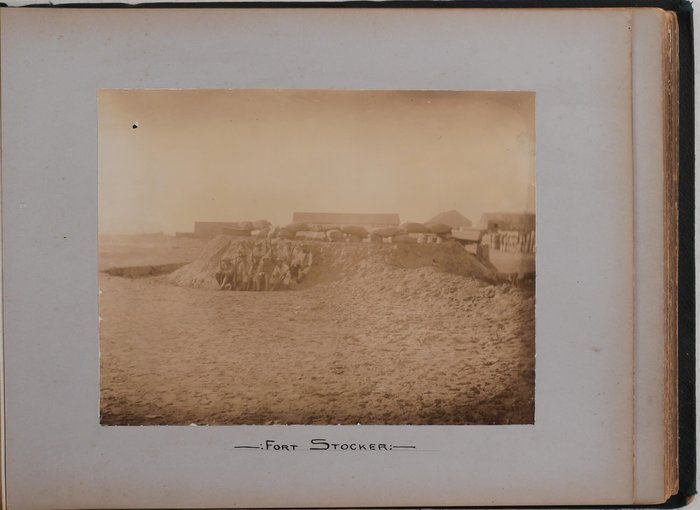

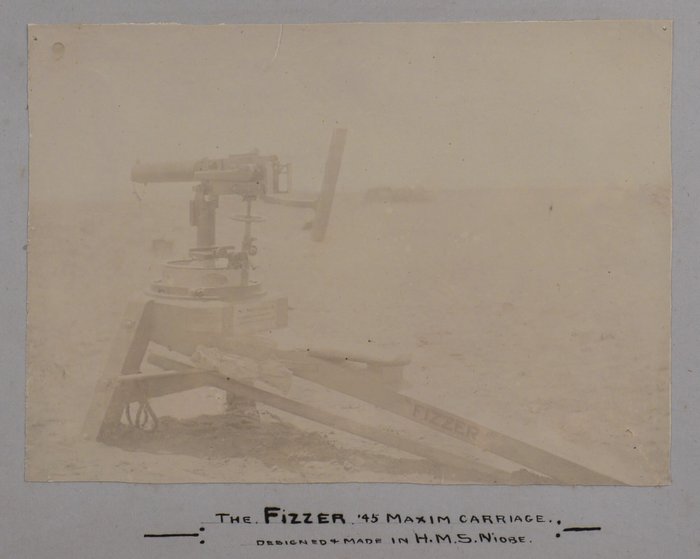
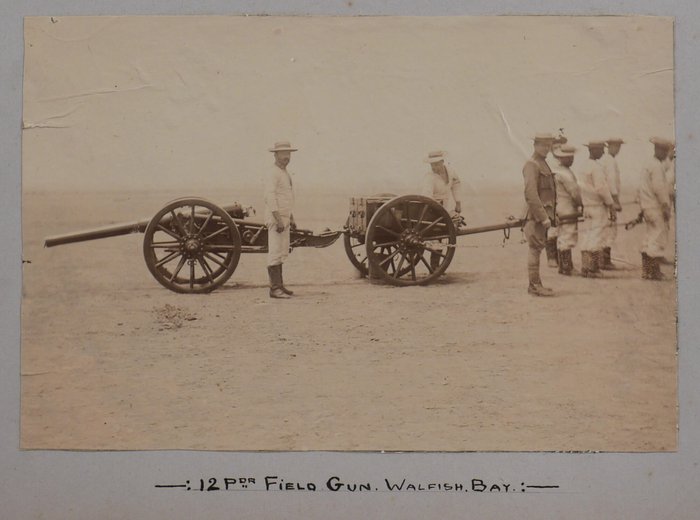
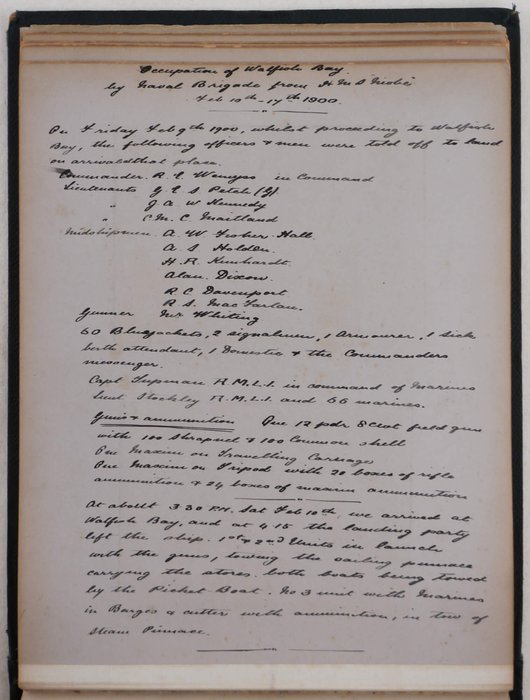
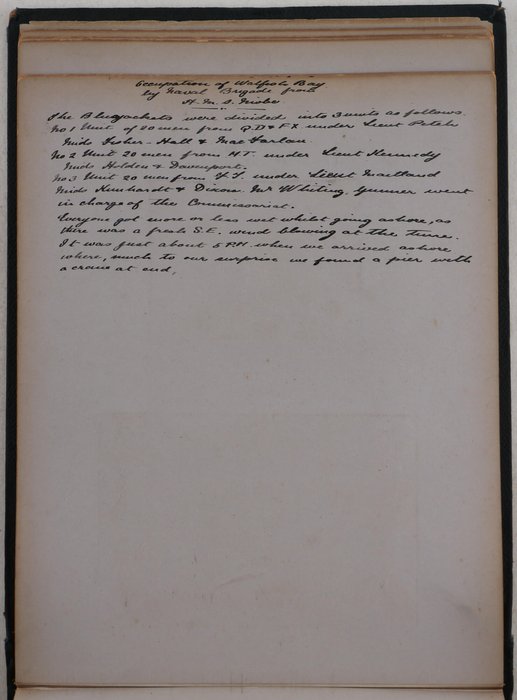
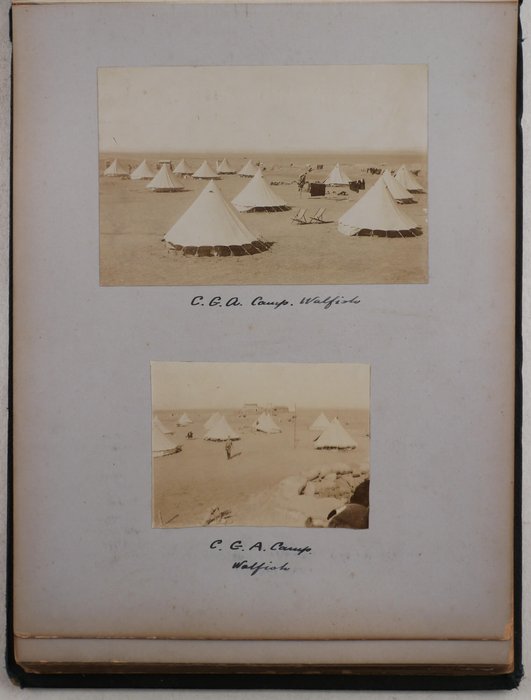
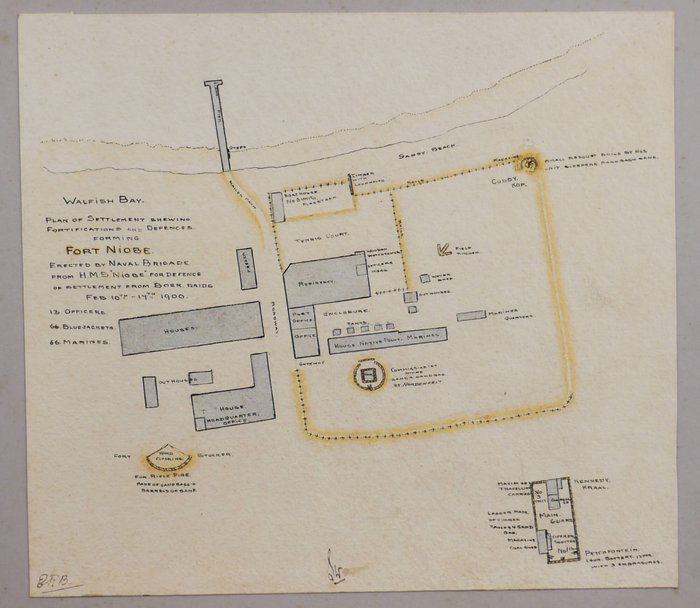
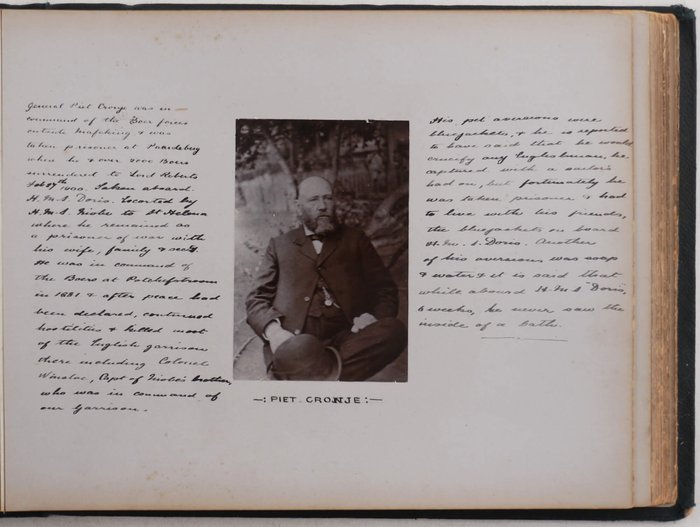

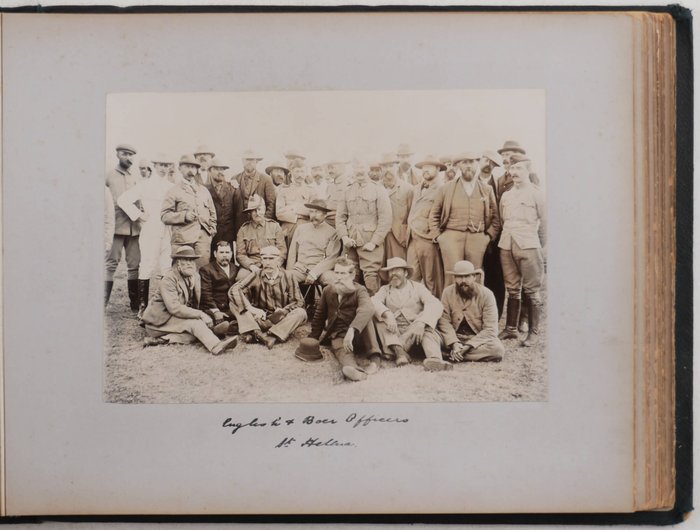
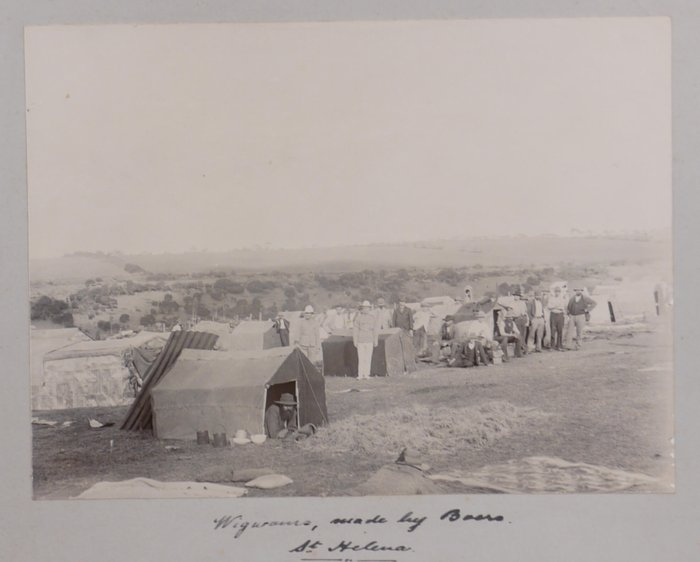
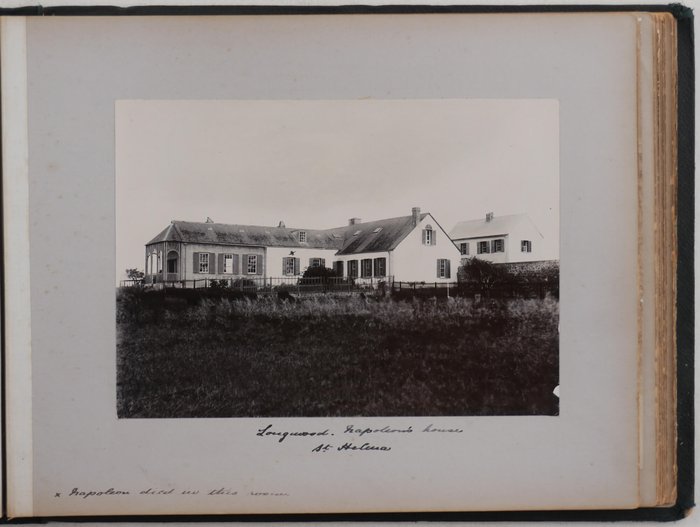
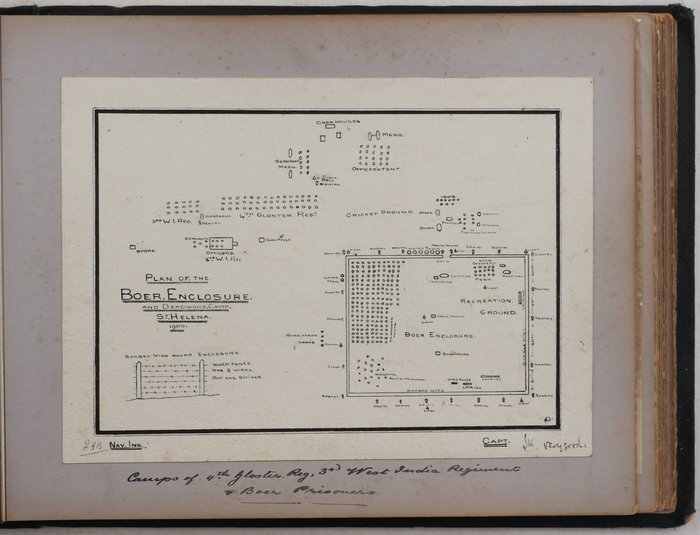
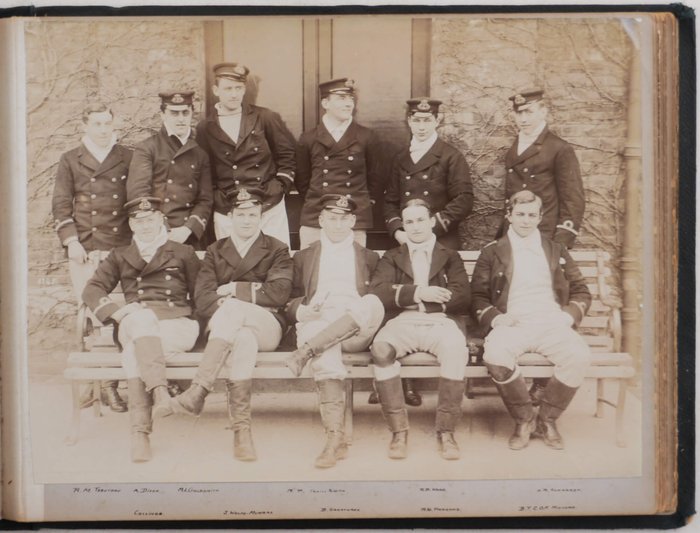
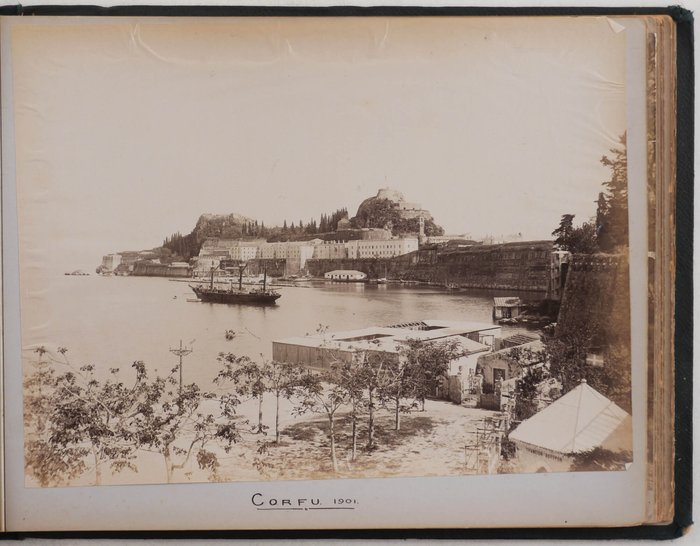

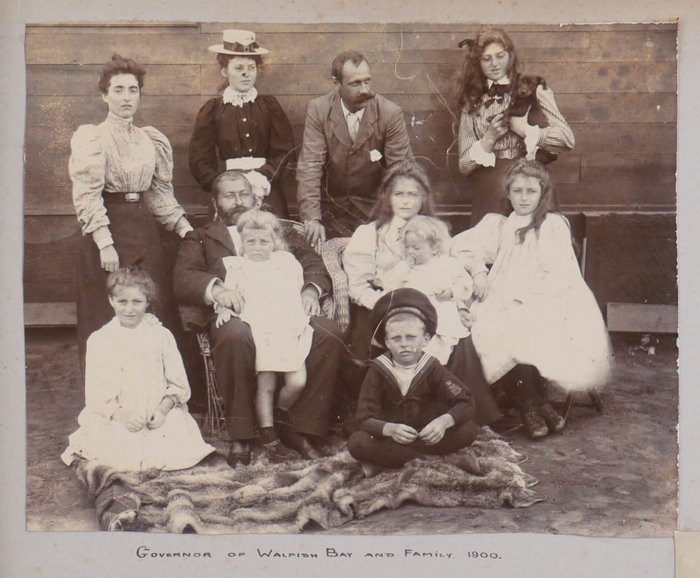

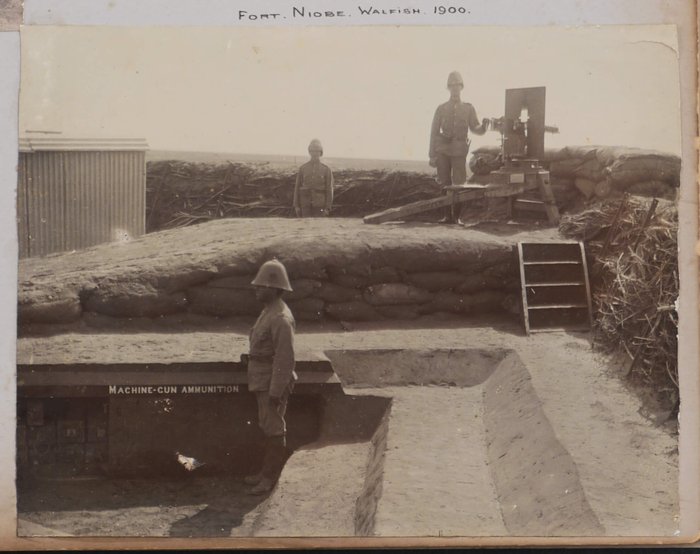
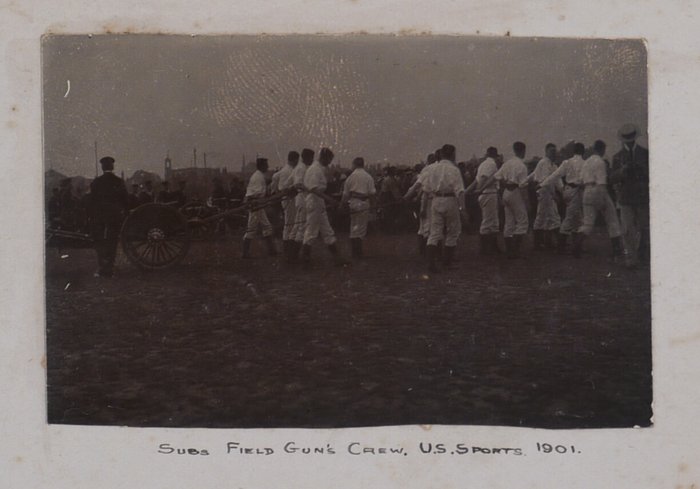
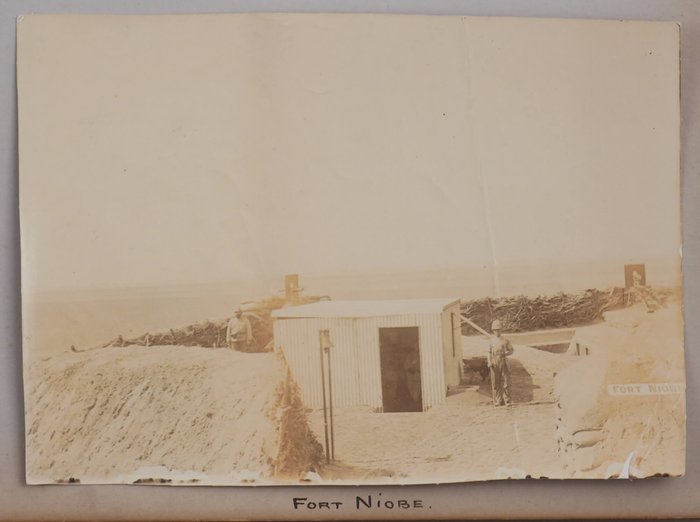

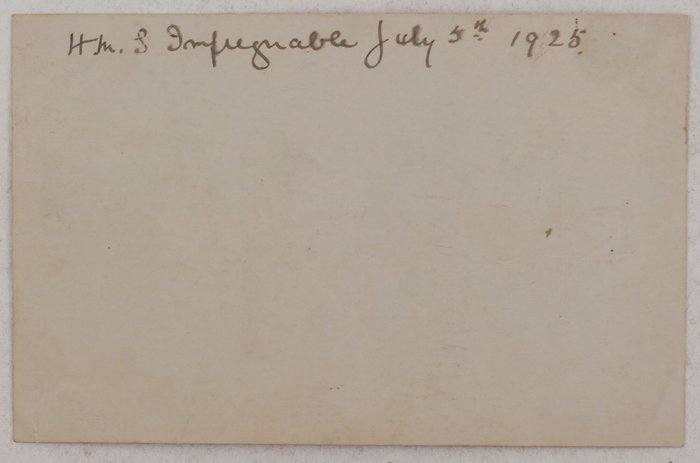
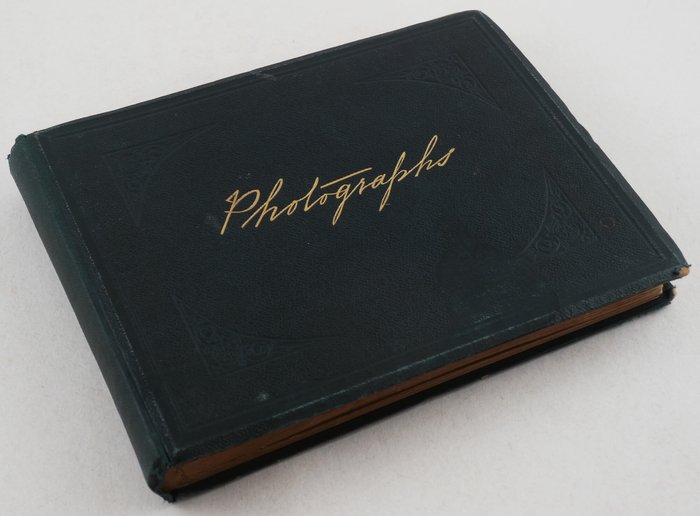
#PA95
Ca. 1900-1901
Oblong Small Folio album ca. 24,5x31 cm (9 ½ x 12 ¼ in). 30 card stock leaves (3 blank). With 33 original photographs (mostly mounted, three loosely inserted), including 29 gelatin silver photos and four albumen. The gelatin silver photos include three large photos, from ca. 21x27,5 cm (8 ¼ x 10 ¾ in) to ca. 14x20 cm (5 ½ x 8 in); the rest of the photos are from ca. 10,5x15 cm (4 ¼ x 5 ¾ in) to ca. 5,5x8 cm (2 ¼ x 3 in). With four large albumen studio photos of Corfu, each ca. 20,5x27 cm (8 x 10 ½ in). All mounted photos with period ink manuscript captions on the mounts, many also with ink dates on the mounts. Two leaves with the compiler’s extensive manuscript notes on verso. With two mounted ink-drawn plans, ca. 18,5x20,5 cm (7 ¼ x 8 in) and 17,5x24 cm (6 ¾ x 9 ½ in); one plan is hand-coloured, the other one is signed “A.D.” in the right lower corner. Period dark green full cloth album with blind-stamped decorative borders on both boards and a gilt-lettered title “Photographs” on the front board. The first leaf detached from the stub and loosely inserted, binding rubbed on extremities and slightly weakened on hinges, corners slightly bumped, a few photos mildly faded, two leaves at rear with unfinished mounting of photographs by the compiler, but overall a very good album with interesting strong photos.
Historically significant album of rare original photos, illustrating the history of the defence of British-controlled Walfish (Walvis) Bay in modern-day Namibia during the Second Boer War (1899-1902). The settlement of Walvisch Bay was founded at the end of the 18th century as a stopover for Dutch East India Company ships on the way to the Cape of Good Hope. In 1884, it was annexed by the British Cape Colony and, in 1910, became a part of the Union of South Africa. After decades of territorial disputes, in 1994, Walvis Bay and the adjacent Penguin Islands became a part of Namibia, which gained its independence from South Africa in 1990. During the Second Boer War, Walvis Bay received British military and naval protection, as there were rumours of a potential Boers’ attack through the sparsely populated territories of German West Africa. HMS “Niobe” (launched in 1897) patrolled the South African coast together with over twenty other British naval ships and was actively involved in the defence of Walvis Bay.
The album, compiled by a naval officer who served on HMS “Niobe” at the time, opens with a large general view of the ship, with the manuscript caption recording the years of the compiler’s service (“Dec. 29th, 1898 to Sept. 15th, 1900”), a view of the interior of HMS “Niobe’s” gunroom, and two group portraits of “gunroom officers” and “ship’s company.” Thirteen photos of “Fort Niobe,” erected around the Walfish Bay settlement by the naval brigade from HMS “Niobe” in February 1900, show its exterior walls strengthened with sandbags, interior fortifications (with visible signs “Machine-gun ammunition” and “Fort Niobe”), Cuddy Cop, Fort Stocker, “H.M.S. Niobe’s naval brigade about to embark,” several views of the field and Maxim guns, and two views of the “C.G.A. [Cape Garrison Artillery] Camp in Walfish Bay.” The photos from Walvis Bay also include a group portrait of “Governor of Walfish Bay and family, 1900,” two group portraits (one loosely inserted at rear) of “Miss D. Cleverly, Miss Cleverly, J. Cleverly” (children of John James Cleverly, resident magistrate of Walfish Bay) and a small photo depicting the scene of “Reading telegram “Kimberley relieved” in Main Fort, Walfish Bay, Feb. 1900”.
The album also contains a portrait of imprisoned Boer general Piet Cronje (1836-1911), “escorted by HMS Niobe to St. Helena, where he remained as a prisoner of war with his wife, family & sec.ty.” An extensive manuscript note describes Cronje’s participation in the war and adds: “His pet aversions were bluejackets, & he is reported to have said that he would crucify any Englishman he captured with a sailor’s hat on, but fortunately he was taken prisoner & had to live with his friends, the bluejackets, on board HMD Doris <…>.” The other photos of Saint Helena include two large group portraits of Boer prisoners, a scene with “Boer officers” marching on a street of Jamestown on Saint Helena, and a view of tents or “wigwams, made by Boers, St. Helena.” Another photo shows Napoleon’s house in Longwood, marking the room where he died with a cross.
Two large ink drawings include the “Plan of settlement shewing fortifications and defences forming Fort Niobe, erected by naval brigade from HMS “Niobe” for defence of settlement from Boer raids, Feb. 10th-14th 1900;” and “Plan of the Boer Enclosure and Deadwood Camp, St. Helena, 1900” (with a small insert, showing the barbed wire enclosure). The second plan is signed “AD,” who was HMS “Niobe’s” midshipman Alan Dixon. He is also present in a large group portrait of young British naval officers mounted after the plan and in a group portrait of HMS “Niobe’s” gunroom officers. Dixon is likely the compiler of the album. The album also contains four large studio photos of Corfu, dated 1901, and a photo (loosely inserted at rear) of British naval officers and their families posing on board “H.M.S. Impregnable, July 5th 1925” (one of the officers is the album’s compiler).
Two extensive manuscript notes on verso of the album leaves give a first-hand account of the “Occupation of Walfish Bay by Naval Brigade from HMS Niobe, Feb 10th-17th, 1900,” listing the names of participating officers (including Alan Dixon) and providing information about the number of troops, guns and ammunition, and the tasks given to different units of the landing party. Overall an important original source on the history of British defence of Walvis Bay and the detention of Boer prisoners-of-war on Saint Helena during the Second Boer War.

